#the entire game was actually a really enjoyable experience and the combat was actually easy
Explore tagged Tumblr posts
Text

trying to process this fucking masterpiece
#i mean. yeah#i cannot think of anything i had an issue with#the soundtrack (especially for soma and kuwana)? fucking crazy#combat was absolutely insane i was fucking parrying everything#i love you snake style 🫶🫶🫶#characters were all amazing#i love the current era of the dragon engine like this gaiden and 8 are my favourite dragon engine games for aesthetics#it just looks so nice#the story itself was so good jesus christ#the pacing was perfect but it did feel really quick because i was actually enjoying myself unlike in judgment#money was never an issue and neither was sp#it was so easy to get#i wasn’t wasting at least ¥60000 just to get my full health back and then buying a med kit#also the skateboard feature was so cool AND THERE WAS NO KEIHIN GANG THAT MADE IT IMPOSSIBLE TO GET AROUND THE CITY#the side stuff surrounding the school was fun though i didn’t do a lot of it#also being in ijincho was fun and KASHIWAGI AND ZHAO 😋😋😋😋#they didn’t speak but hiiiii 🫶🫶🫶🫶#loved how they put them in there#the entire game was actually a really enjoyable experience and the combat was actually easy#the soma fight felt way too easy i was slamming this man on the floor but it was fun#the kuwana fight as well he was trying to show off doing some big kick and i’d just parry his ass 😭😭😭😭#sat in the menu now#i think this is my third favourite behind gaiden#zad plays#yakuza#rgg#zad plays yakuza#zad plays lost judgment#lost judgment#lost judgement spoilers
4 notes
·
View notes
Text
It is done. Overall I'd say the game is a 6-7/10 something. It's fun, but it lacks substance at times and nuance all the time. Thoughts and stuff and probably spoilers under the cut.
I still think the lack of carry over from previous games not called Trespasser was a mistake. There are things in the game that should have been affected by what happened in the others and the game dances around them with absolutely no elegance. And they choices you do make aren't all that important in my opinion.
Another change that didn't really work for me was the reduced party size. It didn't break the entire experience, but I could have handled three of them and it would have spiced up interactions.
I ended up like the combat once I got used to it. It's quite easy to cheese once you get some ways into it though. I'll reply it at some point in the future to see if I think it works as a mage too, since that feels like the class that should be the most affected by the reduced number of abilities/spells.
Other pros include the soundtrack, soundscape and visuals. I like the art style and the environments are very impressive and may have burnt a hole through my GPU. The general plot worked well, especially the endgame, but I thought it got a little fractured towards the middle and wasn't a fan of all the companion quests. I like how they tied in to the plot, but some of them just weren't good.
I'm having a hard time really pinpointing what the issue with the companions is. They're not particularly flawed, which I think is part of it, but other than that there's just something missing. They're funny and sometimes emotionally interesting in other ways, but they're not the DAO or DA2 crew. Davrin and Emmrich are the standouts of the cast, Neve is fun, Harding and Bellara are fine and Taash and Lucanis are not.
I'm still absolutely obsessed with Evka and Antoine though. NPCs and couple of the year. I really hope we get to see what the Grey Wardens look like under their less strict and traditional leadership. And maybe now we'll actually see an end to the calling now?
Neve and Lucanis was also a pretty fun ship, despite my not really enjoyment of him. People should be normal about it.
I absolutely loathed how much this game pulls the "Rook you have to pick" choices. The previous games would at least occasionally have a "do whatever the fuck you want" option that seemed slightly connected to your companions' development. There should have been more of that because why am I making life-altering decisions for all these people.
But the elephant in the room throughout the entire game is its treatment of previous lore and nuance. There are so many exclusions and retcons that don't make any sense and/or seem to exist only to simplify the narrative or make it more appealing to a general audience. In some ways it reminds me of how DC currently treats its lore, which isn't a good sign when you're a game series of four games and a pile of mildly canon extra material, and not a comic book company with several dozen monthly books.
It's weird that the oppression of elves is suddenly not an issue anymore. That no one isn't even casually bigoted towards them now. People are claiming that it's because we're not in the south anymore, but everything we saw before this game seemed to indicate that at least parts of the north were even worse than the south. Slavery has at most been illegal for 8 years, it shouldn't be like it never even existed.
I'm disappointed by how the Crows were handled too. Even if what Zevran said wasn't true for everyone there ought to still have been at least some kind of reference to how people like him were treated. Lucanis mentions hardships, but nothing close to the 11% survival rate and random mental abuse. I still think a plot line that explored the difference between Lucanis' more privileged position and that of less fortunate Crows could have been interesting. But really, anything that doesn't just portray them as goody two-shoes local heroes would have been nice.
But overall the game just seems to suffer from a lack of nuance. Things are bad or good and shades of grey need not apply.
Another weird thing is how much and quickly Bellara blames herself (and sometime tries to blame Davrin and elf Rook too) for the things the ancient elves did. It also felt like the game didn't really allow you to push back against that idea too much. I'm not sure if it's intentional commentary, but if it is it's poorly done. Especially if it relies on elves suddenly not being oppressed.
The endgame was really good and tight. Solas' plot was well-done, more so than any other subplot in the game, and sometimes quite emotional.
The future teaser was... interesting. Magisters? Those from beyond the sea? Did it show up if you didn't collect those circles?
I'm not sure if the game will even get a sequel, but I hope it does and that it's a bit more nuanced than this. I expect a more major time and/or space jump for that one though, so how closely married to the lore it'll even have to be remains to be seen.
Also Zevran, Fenris and Josephine were still ROBBED.
4 notes
·
View notes
Text
Tears of the Kingdom thoughts
Ok here’s one I’m just going to do off the top of my head. I don’t really have any thematic or narrative analysis of this game, so this is just going to be about gameplay. I’m just coming to the end of the game and I have found that my enjoyment has faded dramatically over time. Some of the biggest problems in my opinion are:
1. The combat doesn’t have enough depth or reward to justify itself as the game progresses. Both parry and flurry rush are too powerful, making waiting and counterplay too productive. Similarly, the slo-mo you get from firing your bow mid-air is way too strong. It makes gaining some vertical distance the top strategy in almost every scenario and trivializes actually getting good at shooting the bow. Furthermore, there’s way too much menu selection and grinding/farming required for encounters. At a certain point in the late game, I fought a white Lynel. I countered his first hit and then hit him a bunch of times with the Master Sword. The beast took almost no damage and the sword broke. It was that moment that killed my desire to fight any tough enemies ever again. When I look to combat in previous Zelda games, like Skyward Sword or Twilight Princess, I see a nice clean test of ability, where the enemy is tailored to the particular stage of the player’s skill and gear. It’s also nice to fight a group of enemies without having to pause the action and scroll though menus a bunch of times. I recognize that this particular problem with ToTK’s combat is due to the open-ended gameplay and progression, but it’s a downside nonetheless.
2. The physics systems and Zonai abilities are great fun to use, but the game does not demand you diversify your tactics and solutions. The fan is the biggest culprit when it comes to optimizing exploration. Having access to convenient vertical movement allows the player to just skip over many of the challenges and atmosphere of traversing Hyrule. Because the fan is so good, even other methods of vertical movement, like balloons, DIY bridges and catapults are made irrelevant.
3. Puzzles can be solved creatively but very rarely do they require creativity, or test the player much at all. Completing shrines was an enjoyable experience for me but the vast majority felt like they ended before the truly got started. A fair few were so simple that they basically just introduced the player to a concept and made them execute it, no twist on the formula whatsoever. Dungeons too are pretty rough in this regard. They’re not so much one big puzzle space as just a compilation of a couple of shrine concepts bundled together. It was a disappointment considering how the “return” of dungeons were hyped up before the games release.
I have plenty of other gripes but I think I will leave it with these issues. The millions of people who have played this games have demonstrated all these fantastic and inventive methods of traversal, combat and puzzle solving. The problem is that these solutions never produce an advantage in time saved, effectiveness or reward. It’s always more productive to just exploit the games systems in a safe, predictable way. I understand for some people, going out of the way to be creative is a reward in itself. For me though, I need more than just creativity to be possible; I need it to be a necessity. For most of the game, it just isn’t.
A lot of these shortcoming stem from the fact that ToTK is an open game which prizes freedom above all else. The game isn’t uneven or poorly conceived; it’s that certain elements of the design are in contradiction to others. To me that’s fascinating, since it leaves no easy answers for fixes. I can think of plenty for issues like the bow bullet time, for example, but how can one gradually intensify and elaborate on puzzles or combat when the player can approach them in any order? Or just skip some entirely? I’m not sure. It’s clear to me that open world design is here to stay for Zelda, and I think that’s for the best. ToTK is still overall a good game and roaming around Hyrule is a massive highlight. I just hope the developers have a hard look at what can be improved and don’t get distracted by the massively positive reaction to the last two games. If there’s any team that can do that, it’s the Zelda team.
#the legend of zelda#zelda#legend of zelda#link#totk#totk thoughts#tears of the kingdom#meta#analysis#critique#nintendo#nintendo switch
7 notes
·
View notes
Text
Okay so I've been playing Star Rail and I'm gonna do a lil amateur review because I do that sometimes
Here's my take
1. I like it. I got it for pc and it's fun when I can play it.
More under the cut
2. It is free to play with micro transactions, however I've not spent any money on it and I find it quite playable and easy to get into. That being said, I started with a lot of free stuff from starting so early and codes, so my experience may have differed if I started later.
3. It's a turned based RPG akin to JRPGs like Digimon Cyber Sleuth, Persona 5, etc, but a little easier to comprehend combat wise
4. Story and setting so far is something sort of like a mix of Star Ocean- specifically 4 with the planet hopping- or Rogue Galaxy, with... well, a LOT of mystic, techno, scifi, and religious babble. Enjoyable tho. I love space trains so much. It's dumb but classy. There's also a LOT of optional lore you can collect and read to really help you get immersed if that's your thing, and characters will have a lot of dialogue to give you more world building lore too. That being said, they do kinda just toss you into the ocean with really complex shit right out the gate with no vuild up- I've been told that having SOME knowledge of the Honkai Impact series can build upon what's given, but it's not entirely necessary.
5. Graphics are great, I like the art style and how polished everything looks. Art style works for the game and it looks gorgeous. I do think the NPCs kinda look plain, but that's about expected.
6. Music is passable. Not really finding any ear worms just yet, though. The summoning music and the train music are great though.
7. It might be me and my somewhat shit connection, but I experience lag and disconnection sometimes. This can get pretty frustrating
8. Characters are fun and have fun dynamics with each other. I already dig The Trailblazer, Dan Hung, and March 7th's dynamic- I will say, wtf is this name? Like I know why, but still, not just March, March 7th specifically is her name. Is her full name Saturday, March 7th, 5023 AD?
9. Voice acting is... decent enough. I play English dub because I have reading difficulties due to unmedicated ADHD, before anyone starts screaming at me to change languages. There's some strange takes or line reads sometimes, sometimes the voice will read something different from the text, and there's a couple of voices I wish would just sound... different. But the majority is passable to really good. I've also heard some unexpected voices- you could say they are TRASH, but I find them TASTEful.
10. Character design is pretty fun imo- definitely a bit of Genshin style, but it is by the same people so you kind of expect that. But they're fun to look at, have fun weapons and moves, and have great art. My one complaint would be similar builds and designs for some characters, but that's minor and also expected. But I will say, I do prefer a good anime style over indie cartoon or realistic style, so to me I think it's great.
11. The menus are... very complex. Easy to lose track and get lost in. I swear the pause menu rearranges every time I open it.
12. It shouldn't need saying, but: It's not Genshin Impact- that's fine actually. In fact it's great, turn based rpgs are really fun, especially JRPG styled, which i like to play (Dragon Quest 11, Digimon Cyber Sleuth, Persona 5, Pokémon, etc). While I do like exploring open worlds and having a lot of freedom and real time fighting, sometimes it's nice to have a simpler point A to point B system with smaller maps, and especially nice to have auto battle. There's a bit of carry over from Genshin, but i think it works for what's given. I do miss my emergency fo- I mean, my adorable best friend Paimon, but she and all my other Genshins are Impacting in the other game while I Rail some Sta- wait I'm not finishing that sentence.
13. It is gacha. You kind of expect it- some people won't like it, I kinda like it to some degree, but I do got issues. Basically watch your spending- again, I haven't felt the need to, unlike some games that feel like you have to to get anything done. But it definitely would help to speed things along if i were. When you get a good character, it's a nice feeling for me, personally. That being said they do give you 3 pretty good ones right out the gate, and you do gather in game materials to help you summon at a fair pace anyway, so you're rolling decently enough to get something out of it.
Overall an 8/10 so far. I wanna keep playing, but unfortunately this damn meat mech that is my wretched bodily prison of my soul requires sleep, and I have things I have to do.
2 notes
·
View notes
Text

2022 Game of the Year Countdown 4. The Legend of Heroes: Trails from Zero Nihon Falcom Nintendo Switch, 2022 (orig. 2011)
The Crossbell saga is finally being officially localized and I was highly anticipating this release since I was not able to play a proper translation of the games. There was a highly polished fan translation, but I was unable to play it as they originally promised PSP support, only to change course once work got underway on the PC versions. So, I was stuck with a mostly unedited machine translation that was only passable. When I first played Zero a few years ago, I had a good time and would have said that the poor translation didn’t really affect my enjoyment. However, after playing a proper translation, I can see how it severely limited many of the best aspects of the Trails series.
The NISA version brings the same level of detail and immersion that was lacking in my last playthroughs. In fact, I would say it was almost like playing Zero for the first time again, which is an experience I wish I could have with every game in the Trails franchise. The characters are unique and fun, well designed, and accentuate the tropes they fit by growing instead of just fitting a label and never moving from it.
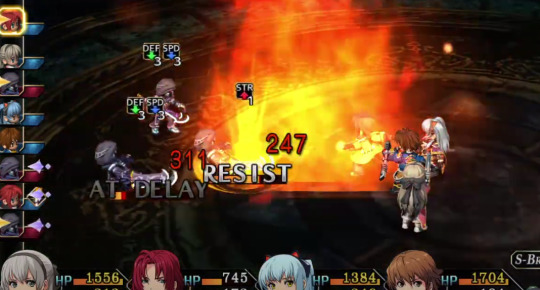
There are aspects of the combat that I enjoy in later Trails installments, but Zero has the best of the classic combat in the entire franchise. Complex arts system (magic) that is fully customizable? Yes. Flexibility of roles in combat? Yes. A party that compliments each other? Yes. I never got tired of combat in this turn-based JRPG, and sought out as many special/hidden monster fights as possible. Planning out your attack is really fun, and by swapping specific accessories, you can create really powerful units. And unlike later Trails games, it’s not as easy to break the game with 100% evasion or guaranteed critical hits on characters with an already double boosted attack stat. Do I like those things? Absolutely. But I also like the challenge of not being able to do that, or at least not as easily.

Zero gives you a full party of four characters right from the start, and they all fit together so well that it feels only natural for these complete strangers to form a powerful bond as a group. I think part of why Crossbell is such a beloved pair of games comes down to how the initial party fits together so well, supports each other, and grows to form a group that becomes emblematic.
In addition to the new characters from Zero, we see a few returning characters from the Sky trilogy, including my two favorites in the entire franchise: Estelle and Renne. Their storyline was actually the driving force that kept me playing during my first playthrough a few years ago, and to see it fully realized with a proper translation was amazing. I cannot get enough of these two and the way that Falcom was able to write them into the story without overshadowing the new cast was phenomenal.
One negative about Zero is that the start of the game can be a bit slow, and maybe even a bit boring if you don’t immediately fall in love with the city of Crossbell or your party of characters. Very little of consequence really happens until you pass the halfway point, which can turn some people off. I’m down for this sort of thing, especially in the Trails series, so it wasn’t a big negative for me, personally, but I can see it being a speed bump for others.

Falcom is well known for having great music, so of course this soundtrack is filled with bangers. Inevitable Struggle is an all time great when it comes to boss fights. Afternoon in Crossbell is a calm and relaxing location tune. Firm Strength has a creeping sense of confidence to it. Even Get Over the Barrier is a great tune, despite how overplayed it is.
Trails from Zero is an all time classic. If you haven’t yet jumped into the Trails series, I might not recommend this as your entry point since there is a lot of background knowledge you’d need to fully appreciate the plot, characters, and overarching setting, but I cannot stress enough how JRPG fans absolutely need to play the Trails series. It’ll ruin RPGs forever for you because nothing else can even compare, but it’s absolutely worth it.
16 notes
·
View notes
Text
My Favorite Fishing in Video Games Where Fishing is Not Core Game Play
A really awesome surprise for me is always to boot up a game that is full of action and suspense to be introduced to a fishing side activity. I have toiled away at fishing in games for hundreds of hours at least. It has gotten so bad in some instances that my friends have asked me why I haven’t just taken the plunge into real fishing. It’s definitely because that is a lot of work and in real life I don’t catch a fish every 30 seconds. They have also wondered why I don’t just play a fishing simulator like Planet Fishing (Shout out to Planet Fishing that’s a great game). And that’s where I have to think for a while. Fishing while you have better things to do like save the world is very special. You aren’t fishing because it’s the objective of the game or because that’s why you are there, you are fishing because it’s fun and maybe you need a break to swing a fishing rod instead of a sword. And then you can stop, and get back to fighting or whatever the rest of the game entails. Below are games that have fishing in them for mostly no reason at all. I have shamelessly spent way to long with my bait in these waters and absolutely loved every second of it and I hope that you (the reader) can find a lot of relaxation in these waters as well.
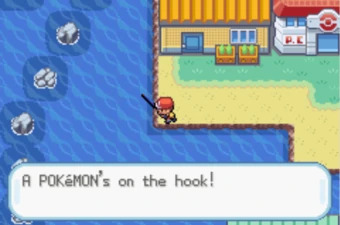
Pokemon Series
Since the very first Pokemon game there has been fishing. You get the old rod from some guy and then you are free to fish up as many goldfishes that you want hoping that one of them will grow up to be a 21 foot tall dragon. Pokemon has combined their fishing with their main game play and makes you at least start a battle with the fish you drag onto shore. Now fishing in Pokemon is pretty subpar mainly because a single Pokemon game hasn’t really been known to have more than a handful of Pokemon that you can fish for. Also if you are looking for a strong water type Pokemon you could do a lot better than fishing for it. Typically a Pokemon player will fish about 5-10 times total. And although fishing for Pokemon isn’t all that great it has been in every game for over 20 years and that is pretty impressive. It’s a small detail that makes the world of Pokemon feel like a real world of wild creatures.
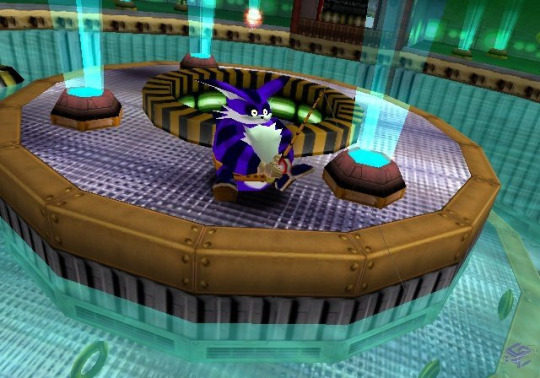
Sonic Adventure DX
In Sonic Adventure DX you are given the choice to play as a lot of different characters, one of which is named Big the Cat. Most of the characters are combat characters that rely on speed and attacks to get through levels, some even wielding rocket launchers and extremely oversized hammers. However when you start the story of Big the Cat you are thrown in a completely opposite direction. Big the Cat is a giant purple cat who lives in the jungle with his best friend Froggy. Froggy accidentally swallows one of the most powerful objects in the Sonic universe and Big the Cat must chase him all over the world trying to fish him out of where he is hiding so that he can eject the Chaos Emerald out of him and they can return to their life in the jungle. The fishing mechanics in this game actually are really good and this is probably because Sega had just put out a series of mildly successful Bass fishing games before releasing this game. Either way its absolutely hilarious that Big the Cat gets to defeat Chaos 6 right before Super Sonic has his showdown with Chaos Perfect.
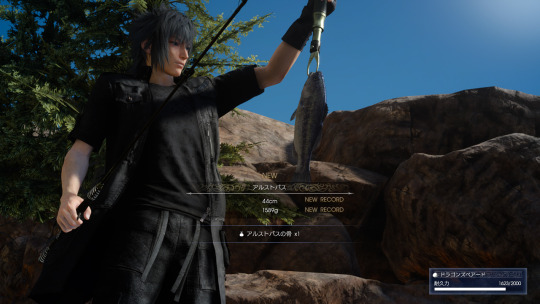
Final Fantasy XV
In Final Fantasy XV you play as Noctis and his favorite hobby is fishing. When I first played this game I sped through it and never fished once and reached the end of the game never indulging Noctis in his hobby. When I replayed Final Fantasy XV I fished for 50 hours and then ejected the disc from my console. The fishing in Final Fantasy XV is surprisingly deep with a lot of the vendors supporting what you could call a fishing road trip. In the game it is extremely dangerous to be out at night so I would plan day trips to lakes to maximize the amount of fishing I would get to do. I would prepare days in advance to make sure I could afford the trip and that I had enough supplies to both protect myself at the lake and have enough supplies to last the whole day. Final Fantasy XV really is a game about getting really distracted and fishing is probably its best distraction. My days on the lake were the perfect balance of peaceful and rewarding, this game offers an awesome reward of well planned trips and a good haul of fish.

Final Fantasy XIV Online
Final Fantasy XIV is the only game I have ever played where the fishing played exactly like its combat. When you are fighting enemies in a dungeon in FFXIV you are constantly adding buffs, landing hits, using consumables, and managing resource bars. When you are fishing in FFXIV you are constantly adding buffs, landing hits, using consumables, and managing resource bars. Note you are doing so at a much more leisurely and less life threatening pace but you are still doing it. I never maxed out the fisher class but I got it into the expansion content which was a really long and relaxing experience. Yet another Final Fantasy title where the real meat of the game is in getting distracted. When you fish you also sell on a player market that fluctuates based on market price just like real fish. You get the relaxing fishing side of the game and also an aggressive economic number crunching side as well. I spent way too long with a real pen and paper deciding how much I should sell for on any particular day and bossing around my two cat girl employees.The MMO aspect of the game adds so much to what you would expect to be a very solitary experience.
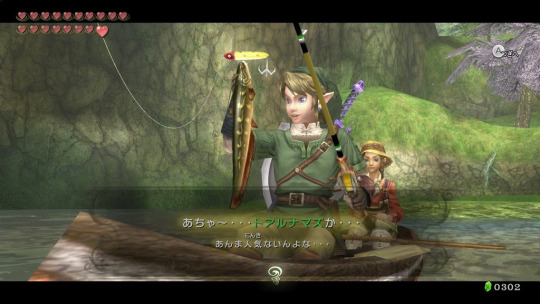
The Legend of Zelda: Twilight Princess
Have you ever gone fishing for hours to receive an empty bottle? That is exactly what kick started my addiction to fishing in Twilight Princess. An empty bottle in Twilight Princess means another way to heal yourself, another way to add oil to a lantern, another way to carry useless water around. The only way to get the 4th bottle in the game is to go to a dedicated fishing spot and fish until you pulled it out of the pond. The actual fishing is pretty weird, it involves motion controls which I still am not entirely sure what they do or how to properly use them but it is really fun to hold the pole in gyroscope and set the lure in the water waiting for fish to come get a nibble. Although the physics with the water make it difficult to see if you have actually gotten a bite or not it still is enjoyable the other 85% of the time it works.
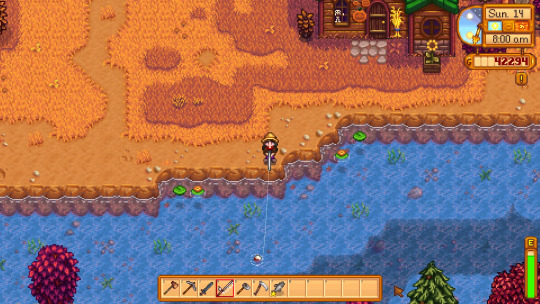
Stardew Valley
So this one is at the top of every other “fishing in games” list and there is a big reason for that. It’s really good. I think in my first Stardew Valley farm I gave up farming entirely and fished all day every day and stopped to buy food to replenish my energy and go back at it. I really didn’t care about getting rich or making enough money to expand the farm or get to know everyone I actually spent about 50 hours just fishing. The fishing takes some skill and a pretty keen eye but the random jerks of the fish and the rhythm of the game play are so fun to try to master. It’s a part of Stardew Valley that I felt like I was continuously improving on as time went on and it was really fun. I mean I don’t recommend it because you’ll end up moderately poor but it was really fun.
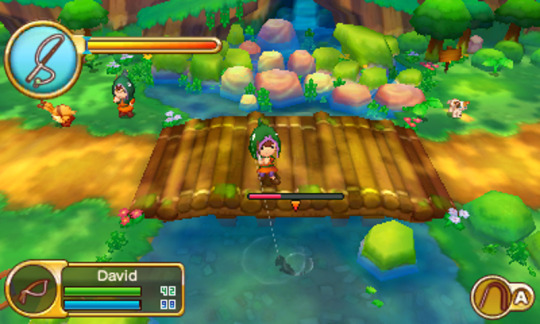
Fantasy Life
Fantasy Life offers you 12 potential jobs, you could be a brilliant blacksmith or a devious potions maker, a lumberjack or a knight, a hunter or a seamstress. However your inner dad is calling and you decide you want to play through a fantasy RPG as a fisherman, hell yeah. the story is relatively short so you can quickly unlock a lot of locales to fish at and there is a manageable economy system that lets you deal in fish in advantageous ways. You can even pick up cooking on the side and make fancy dinners and sell the fish for higher you can do that as well. Fantasy Life is like a clever mix between Animal Crossing and Final Fantasy XIV and it kind of succeeds and falls short of it. The fishing also takes a good amount of skill and rhythmic approach to master so it doesn’t get boring almost at all until you have cleared the game.
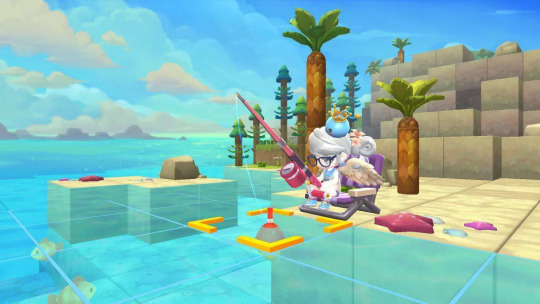
Maple Story 2
Maple Story 2 is one of the most expressive and cutest games that I have ever played. And the fishing is no different, its all about style. The fishing in Maple Story 2 is monotonous and can get old but you do it for the chibi clout. Because much like the rest of the game you can look however you want and do whatever you want and sometimes you just feel like kicking back and throwing lure in the water at the beach. I never got super into the fishing in this game but it won me over with its adorable design and stylish atmosphere.
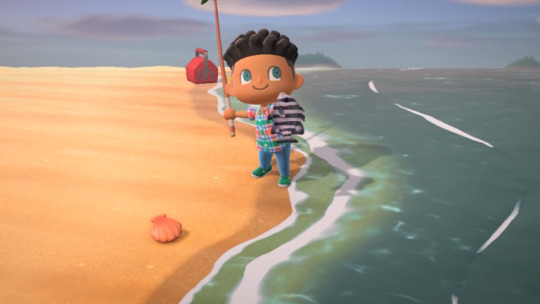
Animal Crossing Series
Of course I had to include the most popular game right now. Animal Crossing has become something of a connection between people when we can’t leave the house. A thing we all have in common on social media and with our friends. My first experience with Animal Crossing really starts with New Horizons and I was completely blown away. The fishing isn’t super complex or difficult but the range of what you can pull out of the water and what you can do with it is absolutely breathtaking. For a game about cartoon people living with humanoid cartoon animals the fish looking photo realistic. And the museum where they can be kept is stunning. The museum looks like it was designed to capture the feel of being in a museum and matches the design of all the great real life aquariums and observatories. Although it is a bit frustrating when your rod breaks it is easy enough to make one (or worst case buy one) to get your bait back in the water.
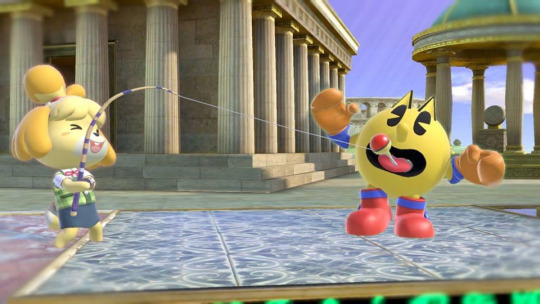
Super Smash Bros. Ultimate
Tell me I’m wrong, you can’t. Isabelle getting added to Smash brought a very powerful fishing move that isn’t practical all the time but is really funny. Wouldn’t recommend this game if you are looking to relax and fish but I do recommend hooking your friend with a fish hook and send them flying off screen if you had to.
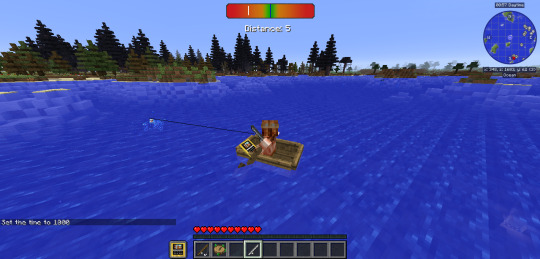
Minecraft
I have a very special role in Minecraft when I join a friends server. A role that I assign to myself. While everyone is off getting awesome swords, spelunking for diamonds, and exploring the infinite landscape, I build a small wooden shack and I set up a farm with an irrigation canal and start fishing. A steady supply of food is necessary and while I’m hanging out with my friends in a server I’m happy to be the one to provide it. The fishing in this game is probably the slowest of all the ones on this list but is the most useful. just throwing the fish in the oven creates food that can help keep you and your companions alive for a long time. I think I definitely have my limits with Minecraft fishing and I couldn’t do it for hours on end it is rewarding to set up shop and find a nice place to settle down for a few hours to fish.
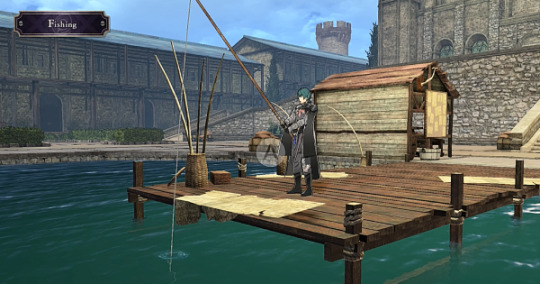
Fire Emblem: Three Houses
This is the only Tactical RPG in this post. Fire Emblem: Three Houses has sections between combat where you can go and talk to your students and do other activities. We aren’t here to discuss other activities though we are here for the fishing. The fishing allows you to catch fish for some reason that I’m sure is good but never intrigued me enough to learn. All I know about the fishing in Fire Emblem: Three Houses is that it’s fun. I started to bust through combat just so that I could get back to fishing. The funniest part about this one is that the fish has a health bar. Pressing the A button at the exact moment finds a way to become easier and still find ways to mess you up. Either way, I’m not that interested in tactical RPGs but I heard there was fishing in this game so I had to play it and it was worth it.
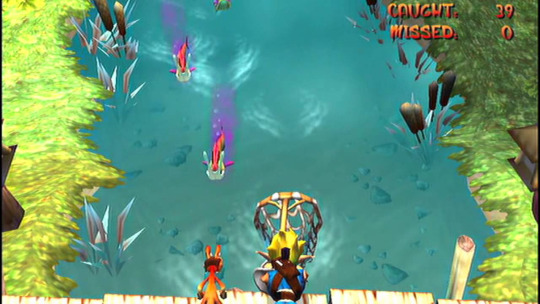
Jak & Daxter: The Precursor Legacy
In Jak & Daxter, Daxter gets turned into a small animal by dark eco while exploring a dangerous island off the shore of his home with his best friend Jak. To get back to the island to investigate, the pair have to borrow a boat owned by a fisherman who is troubled by an invasive species of poisonous eel that is ruining his haul. He asks Jak to catch fish for him without catching any eels. This fishing mini game can only be done once but it is going to either be something you think is very unique or a huge waste of time. All I’ll say is that the sound that the fish makes when it goes into the net is absolutely a reward in itself it is so satisfying. But anyways, more intense than some other options here but get it done so you can get back to absorbing eco powers and jumping on stuff.

Shovel Knight
Shovel Knight is a 2D action platformer but you can also fish. And you fish for the best kind of fish, money. You can get some other stuff too like health pickups and magic replenishers but we know what you want. You see that little glint and you pop out the fishing rod and pull out those money bags. If you are devoted enough you can even get a surprise from the Troupple King (long live his highness) if you fish out the right stuff. I don’t even know if I fished all that much when I played Shovel Knight but it’s hilarious that you can.
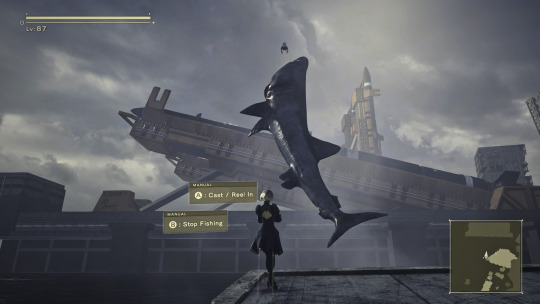
NieR: Automata
I did not play a lot of NieR and that’s because I was fishing. I don’t know why all I did was fish but you throw your little robot in the pond and you lean on a magical stool so honestly it was good enough for me.
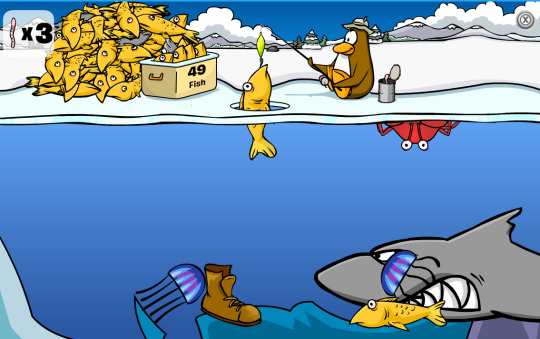
Club Penguin
If you know then you know. In hind sight there really wasn’t a whole lot to do in Club Penguin but this mini game really messed me up. You basically get to move up and down, catching fish and avoiding trash and other hazards. Basically trying to do this and catch as much fish as possible to avoid having to ask your parents for real money to pay for snacks to feed a virtual ball of fluff with eyeballs. I don’t really remember how challenging it really was but I remember getting decently high scores to about like 100 fish per round so I guess it was pretty easy if I could do that at age 10.
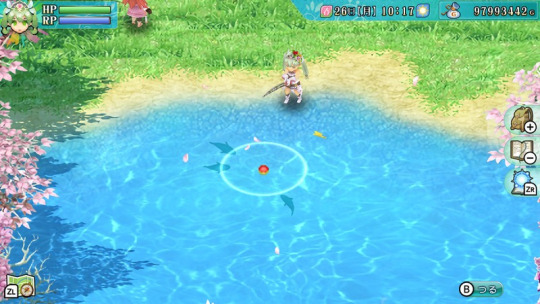
Rune Factory 4
I’m gonna be very honest about this one and say that the fishing in Rune Factory 4 is basically just Animal Crossing fishing but more anime. The fish react to the pole the same, the fish almost look the same, and the buttons to respond are the same. What makes this one special is where you can take it. You can fish in the little moat in town, in the lake, in a dungeon full of monsters, in a lake that is eternally the season fall, anywhere. You are constricted by the boundaries of Stardew Valley and that is how much energy you have and how much time you have in the day. It’s still fun to fish but I wish that they had used their fun fantasy setting to give the ability to fish up some cool made up fish instead of strictly things that exist in real life.
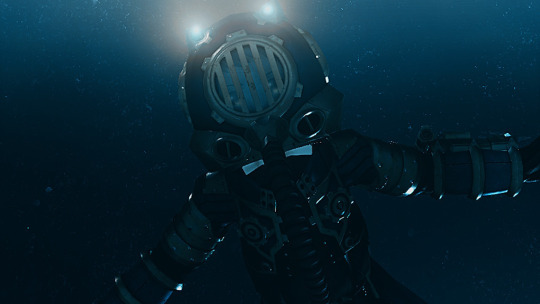
Xenoblade Chronicles 2
Ok, diving, fishing, same thing. Diving in Xenoblade Chronicles 2 is just fishing with your whole body. It works a lot in the same way as Pokemon where you fish up monsters to fight and get the rewards from them. It is a completely optional activity however if you decide to undertake the grind of scavenging in Xenoblade Chronicles 2 then you will never hurt for money ever again. It makes my wonder why Rex stopped being a salvager to do odd jobs because this was PROFITABLE. The main incentive is that there are spots that spawn a certain enemy that drop cores. Cores are like gacha or loot boxes that contain new anime girl partners that deal huge damage in fights. They even have their own side quests and story lines. I spent maybe 30 hours grinding before giving up on this game and while it does become tiresome I really enjoyed the random rewards of possibly getting a new companion or a really cool weapon.
It’s been tossed around that every great RPG has fishing in it. I won’t argue that point but a lot of great RPGs certainly do have fishing in them. Everyone needs a break sometimes and fishing is the perfect activity to remind us to stop and take that break. Even games can get long and without these distractions it might be so much harder to complete these harrowing tasks. Don’t forget to take breaks and just enjoy the sound of the water every once in a while because there’s no rush playing video games.
Honorable Mentions:
Kingdom Hearts: Sora fishing with his bare hands on Destiny Island
Persona 4: Weird aqueduct fishing
Persona 5: Marina fishing life
Sea of Thieves: A pirates life for me
#fishing#fishing video games#fish#kingdom hearts#persona 4#persona 5#sea of thieves#xenoblade chronicles 2#rune factory 4#club penguin#nier automata#shovel knight#jak and daxter#fire emblem three houses#smashbrosultimate#animal crossing#minecraft#maple story 2#fantasy life#stardew valley#twilight princess#ffxiv#final fantasy 14#final fantasy xv#final fantasy 15#sonic adventure#sonic adventure dx#pokemon
3K notes
·
View notes
Text
Personal GOTYs
2021 for me felt a lot better than 2020 did. Though I didn't spend too much time playing things that were absolutely brand new, I did engage with many things that I had always wanted to get to, but never did. And that gave this year an overall pleasant feeling as I conquered challenges old and new and broadened my horizons further beyond the scope of Nintendo. Let's talk about a few of the games that stuck with me. 10) MONSTER SANCTUARY An indie game that combines metroidvania dungeon exploration and progression with monster collecting and turn-based battle systems sounds like a recipe for success. Even better when your monster designs are by and large cool, cute, and everything in between. But what really marred my experience with this game was the high difficulty. The game scales to you as you go through it, as you can explore various areas in any order you desire, so grinding wasn’t much of an option. You also hit a level cap by the end of the story, so when I found myself struggling with a battle near the endgame, I realized that my team and strategy simply weren’t good enough which meant I would either need to redo and re-grind an entire team back to the level cap from scratch or just give up. I chose the latter, unfortunately, and though they have since added an easier difficulty and further nerfed the challenge of those battles in particular, it leaves a bad taste in my mouth knowing that some devs are still unable to understand why Pokemon is so approachably simple to clear and only tends to get hard after the credits. Still, the journey through it was by and large enjoyable, and I don't regret the time I spent on it overall. 9) NEXOMON Between the prior game, Pokémon, and my frustrating foray into Digimon World: Dusk, I played a lot of monster collectors this year. Uh, anyway, Nexomon is something I heard about from a personal friend of mine. They had played and enjoyed the sequel, Nexomon: Extinction, and recommended to me to play the first game as the story logically follows from it. Nexomon started life as a mobile game, so when it came to Steam it had a bit of its blood sloshed around in wonky ways. Items that were normally in-app purchases were found in random places as hidden treasures, for example, and characters often made metatextual references to the fact that I was playing on a phone, when I wasn’t. However, the world design was quite pretty, the characters were amusing, and the actual creature designs for the Nexomon are impressively solid - more than the game frankly deserved, I think. Battle itself is a stripped down version of Pokemon. Speed isn’t a thing, you always go first and the enemy always goes second. A defeated enemy will be able to switch in and attack you immediately. Every single status ailment is immensely debilitating and remarkably easy to abuse. Also, every Nexomon only has a single type, limiting potential fun combos, along with many mechanics being obscure and difficult to figure out. Now that I’m saying all this to myself I’m surprised that I still left this game feeling positive about it. It only makes me more excited for the sequel, which I’ve heard fixed basically all of these issues and made things a lot more interesting. 8) HYPER LIGHT DRIFTER Hyper Light Drifter is a game I enjoyed purely on the back of its gameplay. Combat was very tricky, but I never felt cheated by the game, and checkpoints weren’t too crippling. I've even been complimented in my persistence and skill in figuring out the combat system as quickly as I seemed to. My only main issue was difficulty in locating some of the important collectables you need to progress. But, this game has a bit of a hard to understand story! It’s told entirely through actions and pictures, which is not my favorite thing in the world. I didn’t really Get It my whole time through and needed to rely on outside material in order to have a semblance of an idea on what was actually happening. There was also a myriad of optional content and hidden items I never found, and I wasn’t really encouraged to go back and seek them out without any kind of guidance. This isn't to say that these are things that can't be good or that aren't good, but it doesn't personally jive with me. I enjoyed it, but it wasn’t as overall solid as some other indies I explored. 7) HYRULE WARRIORS: AGE OF CALAMITY I never played the original Hyrule Warriors much. I would play it at a friend’s house here or there, take in some of the coverage as it got its DLC updates and eventual release on Switch. And that’s also why this game is in my list - I borrowed it, not bought it. And for the price of free, this was a splendid experience. Though the story’s “alternate timeline” approach is seen by some as cowardly or unfitting of Breath of the Wild’s atmosphere, I greatly enjoyed the opportunity to see things from Zelda’s perspective, get more fleshed out characters beyond the champions and fall in love with an adorable time-traveling egg baby. It was a deceptively simple game all things considered and bad framerates never marred my experience personally. Something fun to waste time with. 6) THE LEGEND OF ZELDA: SKYWARD SWORD HD Skyward Sword was one of two Zelda games I had never played before (the other being Spirit Tracks) and I had heard tons of opinions about it. All ranging from, fantastic story, great dungeon design, creative items, to the other end of repetitive bosses, lack of freedom, annoying fetchquests, and boring traversal. So where do I land? I generally liked the game, and its flaws didn’t overwhelm its good points to me. I got a bit annoyed with Scrapper, and the dungeons blended together a bit for me, and that second Imprisoned fight really blows… but I would die for my best friend Beetle whom scout, acquire item, and kill small foe. Also one of the most satisfying acquirals of the Bow in the series with it coming so late and allowing you to pretty much trivialize basic combat as a result. The story was good as advertised, Groose entirely lived up to the hype. I am glad I played this game with the new button controls though. 5) BASTION A classic indie game, the first of Supergiant’s ilk, that I had always said I would play but never did, until this year where I finally followed through as part of the aforementioned indie focus. And you know what? It lived up to the hype! Some of the things I liked about it were the great soundtrack, the challenging but not overwhelming combat, the variety in weapon choice, and the story’s framing and presentation were far from Hyper Light Drifter's muddled style. Sure, it helps that I have a sweet talking narrator to get me through everything... but still. This is a game that’ll stick with me and I’ll always remember. 4) PSYCHONAUTS Yes, not the sequel, but the first game! Psychonauts was always one of those games I would lightly hear about every so often. Someone would be like, oh man this old game was great! And I never knew why or how it had come to be that way. I was graciously able to win a Steam copy of this game from a giveaway and decided with the sequel looming that this was the best time to finally give it a try. This game blew me away! There’s an insane amount of love and detail put into the voice acting and the character interactions, the overall world and mental worlds are designed with the utmost care and sincerity, and it was all wrapped up in humorous and wacky hijinks that kept me guessing as to what nonsense would be happening next. My only main criticisms are the lack of ease with which you could find all the collectables and some annoying puzzle aspects in levels like the Milkman Conspiracy or Gloria’s Theater, along with a bit of motion sickness potential in the way some levels move and shift. Psychonauts 2 looks immensely fantastic and a perfect evolution of the first game’s personality, so I’m really glad that their legacy was able to continue. 3) DELTARUNE (CH 1 & 2) My secret shame is that I never myself played Deltarune when it first released three years ago. I watched one person play through it on a livestream and from there I felt like I had seen it all. When Chapter 2 was announced, I thought that maybe this time I would finally play it myself, but I was feeling pressured at the time and didn’t want to commit to it yet. But the amount of spoilers I had seen almost immediately basically forced my hand and made me play the game very quickly after its console release. And for once that kind of pressure didn't make me regret my decision. Deltarune is an interesting game because it’s still currently incomplete but it feels very evolved and beyond its time. Like Psychonauts it has a solid amount of comedy weaved in with its setting, but it also tells some very important stories for its characters. The battle system is also much more fleshed out in Chapter 2, feeling like the numbers and equipment I acquire are mattering in a way that they never did in Undertale. Plus being able to see your “spare progress” is just smart. The endless theorizing, discussion, and obsession with this game is one of the few “popular” things that really has its hooks in me, and I don’t feel ashamed to admit it - it’s a good game! 2) MONSTER HUNTER RISE There’s not a lot to say about Monster Hunter that hasn’t been said already. So for my part, I favorably compare this game to its predecessor, Monster Hunter World & Iceborne, in several aspects. The silkbind skills flesh out a lot of weapons, feeling more like core parts of their movesets in many ways that the Hunter Arts from Generations did not. The Wirebug adds accessibility in recovering from fumbles and new ways to traverse the terrain that never existed before, but there’s also an element of skill in using it right, and not just launching yourself straight into the monster’s next attack. And I don’t know about you, but I like that monsters are just always on the map 100% of the time and you don’t need to bother throwing a paintball at them or gathering their footprints. I’m looking forward to this game reaching new peaks with its expansion, but as it stands now I’m not dissatisfied with Monster Hunter Rise. Also, one of the best final bosses in the series, and this is a series that had a final boss that was a bug. Just saying, if it managed to impress me despite that, it surely did something right. 1) FINAL FANTASY XIV ONLINE From the moment this game was new and fresh off the cusp of its A Realm Reborn stuff, I knew that I would like it. However, I was not a very privileged person in that I didn’t own any Sony consoles, nor did I have a PC capable of running the game. So the game mostly left my mindspace beyond a few mentions of it here and there as my life progressed. This year, I finally decided that after all the quest culling, the addition of flying to ARR, and the new expansion hot on everyone’s minds, that I would finally give it a try. And you know what? Big fuckin’ surprise, I love it. I loved it in ARR. I loved it more in Heavensward. I loved it a lot in Stormblood. I loved it more than that in Shadowbringers. I caught up fully, and despite the pressure to make it just barely right on time for its release, I loved this game more than I thought possible in Endwalker. And the best part is as I go through the tedious tasks I love in games like these, I can feel myself improving not just in my number go up, but in my own personal skill in hitting my buttons, dodging mechanics, understanding the flow of battle, so on and so forth. It feels like something I have been missing from my life that I’ve finally found. It’s so great to be able to share this experience with friends who support me and want to see me succeed in this game as much as they did when they were newer. It’s a game that makes me feel loved, both in-game and in real life. And there’s nothing more valuable than that. GAMES THAT DIDN'T MAKE THE TOP TEN: Digimon World: Dusk, for being just awful in almost every way. Fire Emblem Awakening, for being totally Seinfelded into not making much of a personal impact for me. Baba is You, for spooking me with its metaverse manipulation. Pokémon Shining Pearl, for losing the polish that one would expect after foisting it off to a third party. Technically I'm still playing gachas and MapleStory but those feel less like games and more like an extension of my daily life so they don't count. I hope you all like my long post!
#psychonauts#the legend of zelda#skyward sword#age of calamity#hyrule warriors#hyper light drifter#monster sanctuary#bastion#deltarune#nexomon#monster hunter rise#final fantasy xiv#game of the year
9 notes
·
View notes
Text
Overwatch in 2021
I vividly remember joining the Overwatch beta back in 2016. I was going through a messy break up and was living alone after moving to Los Angeles. My money was running dry and I had to start working a job I didn’t want in order to stay afloat. Yet like a beacon in the night, Overwatch shone its head through the fog showcasing an experience that promoted fellowship, teamwork and raucous good times. After an exhilarating beta, I secured my pre-order and would go on to play Overwatch religiously with a crew for nearly a year -- probably the longest I’ve ever played anything. But when single-player games like Yakuza: 0 and Persona 5 invaded my play space in 2017, finding motivation to continue the Overwatch grind seemed less and less appealing. While Blizzard has certainly outdone itself with world-building and deep lore (the plentiful CG short films after release seemed to beg for an actual film), by design there’s no end-game. Heroes never die. And as I switched to more narrative-heavy titles, I began to think I had my fill of being a Soldier.
Nevertheless, four years later, five years since Overwatch’s launch, I’m right back where I started. I’ve shaken off the dust and am falling in love with Overwatch all over again. The community is pulsating, the gameplay balance is unrivaled, and the additions Blizzard has made are all welcome. Even after taking an extended break from Overwatch, it still manages to reign supreme as the King of multiplayer games. But when games come and go, even without their “15 minutes of fame,” how is it Overwatch is not only the Old Dog, but the Top Dog?
#1: Community. I can’t stress it enough: Overwatch’s focus on teamwork makes playing with friends (or even a random squad) exhilarating. My favorite moments come from calling out which enemies I’m hunting down and seeing my crew follow suit. Coordinating Ultimate Attacks for devastating Team Kills never grows old and the pageantry behind such coordination enriches me with a sense of competitive glory I can’t quite find anywhere else. While you can employ such dynamic strategies in other games, it’s simply not found on the level like it is in Overwatch. I’ve gone away from games like Call of Duty, Battlefield, and even Destiny because I don’t get that same feeling of community.
Blizzard really does everything in its power to make sure you remember that your team is what matters. From the addition of Endorsements, to voting on Player Achievements in the post-game, to even the Play of the Game reels -- everything revolves around highlighting the players around you (and possibly even yourself). Even matchmaking is quick and easy. My gaming crew and I have spent numerous hours playing Apex Legends, COD, Siege, the Division, etc. and Overwatch keeps us gaming the most consistently. There also seems to be the least amount of menu haggling -- when we’re ready to game, we’re in. No going, “Did you get the invite?” “Do I need to send another invite?” All these minor considerations add up to big gains for Overwatch, making it feel like the multiplayer game I spend the most time playing.
#2: Heroes. In my mind, Overwatch has the best heroes. And I don’t mean I love the way they look and feel (though that it is true), but it’s the symbiotic relationship the heroes have with the gameplay that is simply the best I’ve ever witnessed. It’s an amazing feat that Overwatch allows you to develop an edge over your opponent by knowing not only your own skills, but theirs as well. To be great with one character isn’t enough and building your knowledge of every character will end up becoming your greatest asset. It’s an astounding feat to have 32 heroes at your fingertips with all of them remaining in balance. And what’s more is I know all 32 heroes. Because of this I’ve always rejected the idea that anyone is “cheap” and can’t be thwarted, no matter how devious. You simply need to find the foil and be ready to swap characters at will. This constantly evolving strategy forces the best combatants to rotate and understand the entire roster, making Overwatch a stalwart in achieving strategic excellence.
#3: Loot Boxes. Everyone wants to bitch and moan about micro transactions. In my mind, it’s easy to ignore and I’ve always done so. But that doesn’t mean I can’t recognize Overwatch handles it elegantly. Overwatch was probably my first real experience with Loot Boxes, and I remember, even from day one, finding them wildly tantalizing. With so many neat skins, sprays, voice lines, emotes, highlight intros and more to earn, receiving new swag for leveling up was, and continues to be, an exciting part of the Overwatch experience. Providing a seemingly endless array of cosmetics, I can’t help but feel like I’m a rabbit happily chasing his carrot on a stick. Outfitting my favorite characters with bad ass skins and giving them fun emotes is a side pleasure I thoroughly enjoy. Recently, I’ve even committed to getting Golden Weapons. Win enough rounds in Competitive Play and you can buy yourself a golden weapon for your character of choice. Maybe that’s dumb to a lot of people, but I think they make a neat statement about your dedication to the Watch and I’m here for it.
* * * * * * * * * * *
5 years later and Overwatch is still a stunning roundhouse kick in the face. There are enough maps to continually find a great rotation, there’s a plethora of characters to always choose from, all presenting their own unique take on their specified Role. Most of all, Overwatch keeps you gaming with friends. If there’s one reason to highlight above all else, it’s that Overwatch has the best gameplay loop out of any online multiplayer I’ve found.
Playing Overwatch in 2021 means I can play a game online with people and feel like my time is respected. At 30 years old, I just want to find matches quickly, know they’re fair and never have to feel like something else got in the way of my enjoyment. Even when the odds aren’t in your favor and your random squad doesn’t want to play like a Team, you can work your hardest to earn those Gold Medals and shoot for a Loot Box by the end of your session. Overwatch is about so much more than defending the payload. And because it insists on having numerous tantalizing systems in place, it also demands your unwavering attention.
9 notes
·
View notes
Text
Yesterday I started a replay of Half-Life: Alyx, and I want to both share some low-energy ppnions and also tell everyone that I have an Index VR headset.
So, HL:A is the most recent entry in the Half-Life series, which had been sitting in the attic since 2007’s Half-Life 2: Episode 2’s unresolved cliffhanger ending. It’s also a substantial single-player release from Valve, whomst have not gleamed the general public with any substantial single-player releases for around a decade. It’s also also Valve’s first full-fledged VR title that isn’t just a tech demo for your mom or tech industry journalist live-in boyfriend. It is rather unfortunate that not only is it incredibly belated, but also unattainable for the casual video game fan as well as the casual Half-Life enjoyer.
Though it certainly is a complete package that provides a highly tuned VR experience that dunks on all other VR games, there’s some smudginess to it that I feel has not been given proper analysis for whatever reason. Maybe the few people who have played the game are just happy to have another Half-Life entry or a really good triple-A VR title, which I certainly understand. I’ll do my best to quickly go over my grievances as to not waste your time.
The gameplay of Alyx is pretty good. I hadn't had much experience with VR before getting the Index, just a few demonstrations here and there. Regardless, I find it quite easy to slide in and out of VR and don’t experience any substantial negative effects like some other unfortunate souls might. Alyx was essentially the first actual VR game I played, but even then it was really simple for me to become acclimated to controlling my character, even going so far as to using more advanced movement and view options right from the get-go. I bring this up because Alyx is very obviously designed around being accessible to someone whomst has never played a VR game, or potentially any game. As such, there are considerable concessions that put a relatively low limit on what can be accomplished by more experienced players and even someone of intermediate skill.
You only have three weapons, which are a pistol, a shotgun, and an SMG, with two inventory slots for usable items like grenades and health packs. Sure, you can physically hold additional items, even going so far as holding a container filled with grenades and junk, but personally I found that to be a real painful experience that wasn’t worth the trouble due to physics jank and accidental droppage. Besides, it’s not like players are encouraged to do clever/compulsive inventory management, since the environment is lousy with weapons and healing and I rarely was found wanting for more ammo or health.
Combat encounters typically involve around five enemies, with considerable space in between encounters. When not solving puzzles and exploring crusty environments, you’ll be crawling through zombie and headcrab ambushes or pushing through squads of Combine soldiers, which is the essential Half-Life formula. Zombies and headcrabs behave the same way as they have for the past twenty years, with a few slight twists like weak points for instant kills or minibosses. While soldiers are highly accurate with their shots and do attempt to flank or force the player out of cover, they are much less mobile and aggressive than they have ever been. This is fine for VR since players have to physically aim and take cover, though soldiers definitely will stand around and wait to be shot sometimes.
Each fight is intense and combat is by no means brain-dead easy, but from the perspective of someone that has played a lot of Half-Life and shooters in general, the combat in Alyx is limited in scope. I didn't feel much challenge, outside of maybe the final bits of combat. The few times I died were usually due to VR control finickiness when trying to reload, me losing focus and not paying attention, or me making a really, REALLY dumb mistake.
Exploration is fine. It’s mildly entertaining scouring an environment for useful things, though I quickly learned the developer’s tricks, and the act of pulling drawers and opening cupboards got old real fast when all you get is some bullets. Really, you’re only looking for ammo or resin for upgrades, and everything outside of puzzle solutions is just junk and noise. I’m not a puzzle-oriented person, and will become bored and lose interest if a puzzle asks me to remember more than one thing or figure out any complex solution, so it’s fine that no puzzle goes beyond at most one step of complexity. Physics jank is rife throughout the world, and VR only makes it worse (or better, if you prefer the jank). There were one or two times I had to load a save due to a physics object bugging out, the culprit being a valve getting stuck in a wall.
I have little to say about the story. It’s a prequel to Half-Life 2, which is whatever. The plot spins its wheels the entire time, since we know that nothing we do will have any effect on the games we’ve already played. It also tries to be coy about the identity of a particular character, when we know that the character will clearly not be who they say it will be. It doesn’t advance the story of Half-Life in any meaningful way since it ends with the same cliffhanger as HL2: EP2 in what is essentially a canonical retcon. It sets up more mysteries while also refusing to answer any lingering questions. It introduces a character and other elements that are obviously not in the game that chronologically comes after, and so on.
My expectations and testicles have been ground into a fine paste as a result of Valve’s silly little 13-year unresolved plot point cocktease, so I suppose it’s just that I’m not in a forgiving mood, but I found Alyx’s story to be an insulting, blue-ball inducing, time-wasting non-entity, and if Valve wants to think that I’m dumb enough to be satisfied with a 30 second teaser for their next project as part of Alyx’s conclusion, then they can go fuck themselves.
While I’m at it, the level with Jeff is dumb. I’m not interested in a level with an enemy that is inexplicably invulnerable to guns and follows me around for no reason other than to act as a gameplay contrivance. I wasn’t scared in the slightest because I’m a total asshole and possibly a sociopath, so the experience was a dull slog through a haunted house with annoying puzzles and no combat. If you found this to be your favorite level, great, but in my opinion it can fuck itself right alongside Valve.
In conclusion, Half-Life: Alyx is a great game, with notable issues and shortcomings in its gameplay and a deeply disappointing story. If you already have VR and a capable system, I certainly recommend it. Don’t get VR just for Alyx, though. You’ll probably be let down by the rather meager library of VR titles afterwards.
Thanks for reading. Sorry there's no interesting art to look at.
1 note
·
View note
Text
Ys V: Lost Kefin, Kingdom of Sand review
The SNES was a console with many great RPGs. From popular classics like Final Fantasy VI, Chrono Trigger, Secret of Mana, and Earthbound, to hidden gems like Live A Live, Terranigma, Secret of Evermore, and Shadowrun, it’s a library with a lot of enjoyment to offer. Of course, not every RPG on the system fared so well, with quite a few mediocre and forgettable games scattered about, and unfortunately, Ys V, Falcom’s second attempt at revamping their classic series, after Ys IV backtracked to using the original bump combat system, is among these. Even today, about the only notable thing about Ys V to a modern fan is the current lack of any remake, unlike IV, or the similarly flawed Ys III, which was enough to rouse my curiosity and drive me to give it a fair playthrough. While I did have some fun with it, there’s certainly a reason there were no new Ys games for nearly a decade afterwards, and the specifics on why that is is what we’ll be looking at today. Note that while Ys V was never released outside of Japan, it does have an English translation patch, courtesy of Aeon Genesis, in what was apparently one of their most difficult hacking jobs ever.

Story: About 4 years after the events of Ys I & II, Adol Christin, or, as he’s come to be known, Adol the Red, arrives at the port town of Xandria on the continent of Afroca (yes, literally just fantasy Alexandria and Africa), rather suspiciously without his constant companion Dogi, and on an intact ship, at that. The normally aimless Adol has been lured to Xandria by rumors of a mysterious Phantom City, said to contain amazing riches. After being contacted by a wealthy merchant named Dorman, however, Adol is given the truth: the so called Phantom City is actually the lost city of Kefin, a prosperous nation that wielded tremendous power five hundred years ago through the power of alchemy. Recently, the Kefin desert has been expanding, consuming many towns within the area, and monsters have become numerous and aggressive, leaving Xandria at threat of becoming a barren waste. Wishing to gain access to the secrets of Kefin’s alchemy in order to halt this desertification, Dorman hires Adol to find six elemental crystals that are said to have the power to unlock the way to Kefin. Unfortunately for Adol, he really has his work cut out for him this time; many of Afroca’s citizens are fearful of him, due to ancient legends telling of a red haired man that will bring great havoc upon his arrival, and he’s harassed by a band of thieves called the Ibur Gang, who are out to take all the crystals for themselves. Though Adol makes several allies as well, such as Niena, the adopted daughter of the great adventurer Stein, who disappeared three years ago looking for the crystals himself, Massea, a woman who possesses knowledge of alchemy matched by few others, and Stoker, the spirit of a man who lived five hundred years ago, he also comes to find that several other forces are conspiring to use Kefin’s alchemy for their own destructive purposes, and that his client may be less trustworthy than he initially seems.
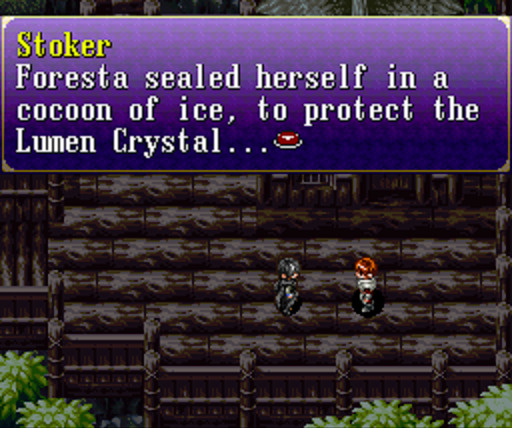
While most of the classic Ys games had quite cliche stories, if understandably considering their age, Ys V is actually a fair bit more original, with some pretty decent moments toward the end of the game. Unfortunately, before that point, most of the story just consists of just wandering around finding all the crystals, with the random interferences Adol encounters being the only things spicing it up, such as being forced to undergo a series of trials, or being blown off a raft by a sandstorm and washing up in a different town, keeping the tradition of boating accidents in Ys alive and well. Despite the amount of important supporting characters around, most of them barely even show up for most of the story, which makes for a pretty underdeveloped and forgettable cast, with only Terra of the Ibur Gang sticking out thanks to reappearing in Ys VI. It also just feels very disconnected from the rest of the series, with Dogi completely missing, and a lot of plot elements that feel out of place for Ys. According to the book Ys Complete Works, a lot of plot elements had to be left out of V, which certainly explains why it feels so underbaked, and leaves a lot of potential for improvement if a remake ever materializes, but until then, while a neat step forward for the writing of the series, Ys V’s story ultimately just doesn’t fare very well overall.

Gameplay: Here’s where things really start falling apart. The bump combat system is gone once and for all now, with Ys V using a dedicated attack button like Ys III, a system that remains in place even today. Unlike Ys III, however, the general gameplay is still much more similar to the other titles, overhead perspective and all, with the change in combat instead feeling a lot more like the 2D Zelda titles. Along with swing his sword, Adol can also now use his shield to actively block attacks. There’s also a jump button, though there’s not much platforming to be done. In theory, this isn’t a bad change at all, but in practice, combat is extremely stiff and awkward feeling. Unlike in Zelda, where Link always swings with a nice, wide arc, Adol is stuck jabbing things for most of the game instead. Each sword has a different range, with exactly one that actually has a proper swing, and the ones you’ll use the most, the second and last swords, only being capable of stabs. Annoying as this is, it wouldn’t quite be a deal breaker, if it wasn’t for how frustratingly precise you need to be when attacking. If you’re even slightly off center, you’ll just whiff. Meanwhile, attacks from enemies are given far more leniency, and even using the shield, you need that same level of precision in order to block anything. Needless to say, this gets very frustrating.

Aside from just attacking physically, magic, or to be more accurate, alchemy, is also available, with spells being made by collecting elemental stones and having an alchemist combine three at a time, with six different elements and eighteen possible spells, which can then be attached to Adol’s weapon and slowly charged up until the magic meter reaches 100, at which point attacking will cast the spell and drain MP and spell charge. While a neat idea in concept, in practice, almost everything you can make is downright awful. Not only are many spells nearly identical to each other, but most of them are just really, really bad, with absurdly long casting animations, during which enemies are free to continue moving around and out of the spell’s range, wasting both your time and MP. About the only useful spells are the ones that hit everything on screen, which take an absurd amount of MP, and the basic fireball, which has no casting animation, and is mandatory to get anyway. Several enemies will also just absorb magic entirely and gain HP, so using it can often be an outright detriment. Even worse, the game basically forces you to use magic by separating EXP into two different types: physical EXP, obtained from defeating enemies with the sword, or from bosses, which boosts physical power and defense and magic EXP, which is gained from killing enemies with magic, and boosts magic power and defense, meaning if you ignore magic, any enemy using magic attacks will quickly wreck you. The stones needed to make the spells, along with a few other items like coins to be sold, are also mostly hidden across the different areas, and can only be found by rubbing up against every wall and object in sight, which is really annoying, and you really can’t afford to miss any of them if you want to make most of the available spells.
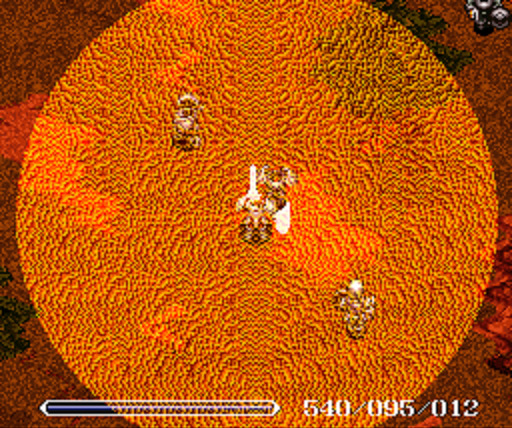
Bosses are pretty dumb too, with a lot of them just coming down to standing in one places and stabbing until they die, chugging heal potions until they die, and considering the most basic healing item heals 60% of Adol’s HP, it’s not hard to do, either. In general, the game is overly forgiving. While still pretty annoying, the level system means it is pretty easy to end up overleveled with physical and magic levels combined, and rather than just dropping a set amount of gold, enemies instead drop gems, which can be sold to merchants for varying amounts. While this wouldn’t make much of a difference on paper, the gems are worth so much, and certain merchants have high enough exchange rates, that you can make a lot of money pretty easily, and considering the third and second best weapons in the game are sold in the first two towns, it’s even easier to break the game wide open. Most areas are also really short, with several dungeons literally just consisting of three or four small rooms, so you’re rarely ever in serious danger traversing them, with most of their length just coming from forced backtracking. While an improvement from how grind heavy most of the early Ys games were, the easiness just makes the experience even less engaging, to the point Falcom had to make a second version of the game, titled Ys V Expert, due to complaints.
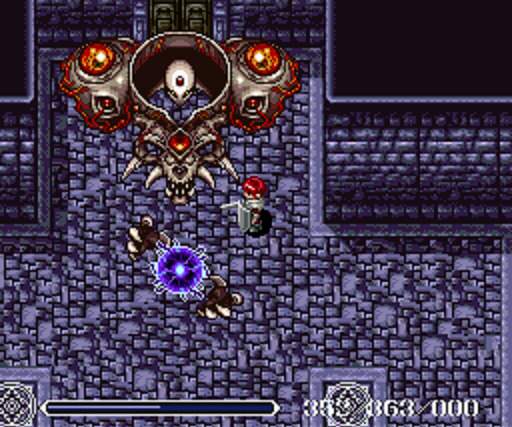
Graphics: The visuals of Ys V, to put it bluntly, barely even resemble the rest of the series, to the point it’s basically indistinguishable from any other SNES RPG. It doesn’t look outright bad, but whereas Ys usually uses a super deformed style with lots of colors, Ys V uses a more realistically proportioned style with really dark, dull colors, to the point that Adol’s usual distinctive bright red hair looks more brown than anything. Most areas are pretty forgettable, with pretty generic caves and ruins, but there are a few neat areas, like the rainy marshlands, which actually carry a pretty strong atmosphere, and the bosses look kinda cool, if a bit samey. You also get to customize Adol a bit, being able to change the color of his clothes and armor in the menu, along with his hair color, if you find a hidden NPC fairly late in the game, with the default option actually giving him his usual hair color. Overall, though, the visuals are still pretty unspectacular.

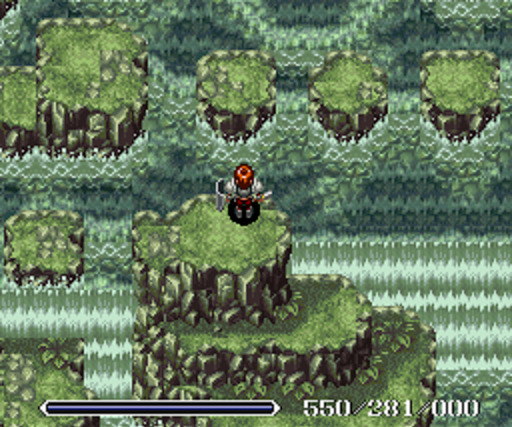
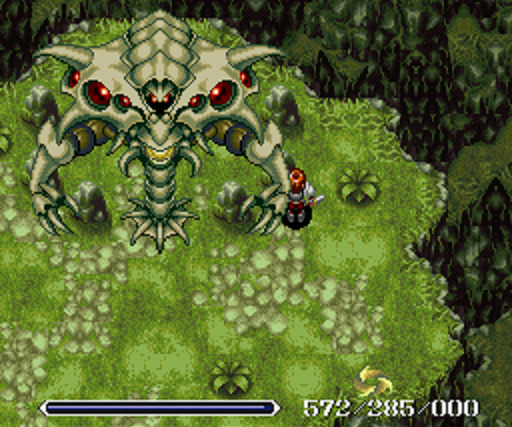
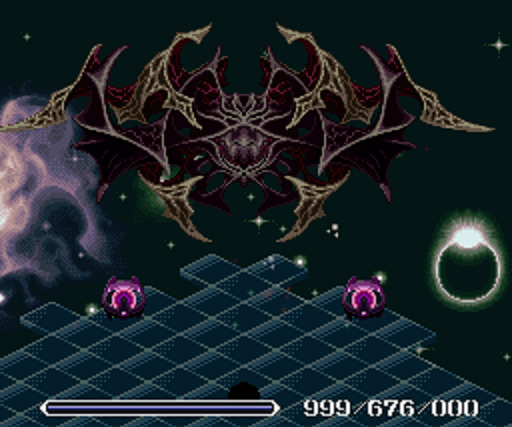
Music: In yet another change from series tradition, Ys V forgoes the usual rock style of the soundtrack, and instead takes a much more orchestral approach, again making it stand out even less from its competition, only retaining a few traditions like the item collection music and the Theme of Adol. In this case, however, I can’t complain that much about the change, because the resulting soundtrack, in usual Falcom fashion, is still fantastic. From the peaceful Foresta Village, to the melancholy Misty Lake, to the mysterious Oasis, to the dark Sand Castle, to the adventurous Wilderness, there are a lot of great tracks to be found, and it’s absolutely worth looking up the soundtrack even if the rest of the game would drive you away.
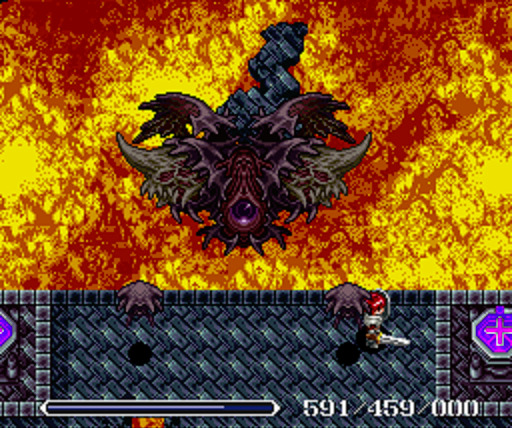
Conclusion: Overall, Ys V is not recommended. It’s not an outright bad game, and can still be decently fun. It’s short enough that it’s not much of an investment to play through, and it was still an important step that allowed Ys VI to fully modernize the gameplay of the series. As a whole though, it’s still a pretty underwhelming and clunky experience that’s almost completely divorced from the rest of the series. You’re not missing much by leaving it alone, and perhaps with the release of Ys IX, a remake of V could be next on the schedule. Either way, that’s about all I can even say about this game. Till next time. -Scout
3 notes
·
View notes
Note
I think I remember seeing somewhere that Edwlgard was the smartest of the three lords for a) wanting to tear down the Crest system and b) taking out TWSITD, and to that I say: the ends do not justify the mand because holy F uck man this route is hHHHHH-
HA
HAHAHA
HA HA
yeah no sorry I do not buy that Edelgard is the smartest of the Lords. Not by a long shot. She does the stupidest thing possible in the stupidest way possible -- throwing her own personal forces into the conquest of Fodlan, substantially weakening her armies in the process of these hard fights and effectively leaving the now subjugated nation as easy pickings for the Twisted. If she expects that she’s going to have forces from the Kingdom and Alliance to bolster her weakened forces, let’s not forget that she subjugated those nations: they’re not going to fight out of loyalty to her, and I wouldn’t be surprised if forced drafts lead to mass desertions. I honestly think it’s outrageous to think she managed to take out the Twisted at all, considering how little forethought she seemed to put into the long game (and the fact that it’s just a footnote in end cards instead of actually showing how she did it is highly suspect to me personally).
[[MORE]]
Also, who in their right mind thinks that Edelgard is the ONLY one that wants to tear down the Crest system? It might not be Dimitri’s top stated priority, but he very clearly wants system reform, and the system is based on Crests. Changing the system requires dismantling the Crest bias -- and not only that, he himself and more than a few of his childhood friends have been negatively impacted by that bias (Sylvain and Ingrid in particular, but it’s not hard to see how Mercedes has been harmed by it), so he knows intimately how harmful it is. The only reason Claude doesn’t have Crests on his top priority list is because the Alliance doesn’t operate the same way the Empire and the Kingdom do, and their reliance on Crests is different -- on top of that, the Eastern Church is considered the weakest branch with the least authority in its embedded region. The system might be uncomfortable in the Alliance, but it doesn’t have the same stranglehold on governmental operations.
Also, who takes down the Twisted? Black Eagles end cards make only the briefest mentions of it, but we never see her do the thing: the game literally ends after she murders Rhea. Meanwhile, Claude not only infiltrates the Twisted home base and forces them to destroy it, he also helps murder Nemesis, who even Seiros couldn’t kill. And this is a man who was completely in the dark about them, unlike Edelgard, who’s been intimately aware of them and their operations for most of her life: Claude takes the new information that Hubert’s note provides, generates a cautious plan, and then completely uproots them. That’s incredibly badass and I feel goes to show just how effective he is as a tactician (and while Silver Snow goes the same route, don’t forget that Seteth is there, and he had first-hand experience with them -- Claude is flying blind, so his success is notable.
Also, just taking a step back to get a broad view of Edelgard’s plan and the long-term consequences shows how unfeasible it really is. Besides how ill-advised it was to take her own forces to war with only Twisted ‘support’ against the Church, the Alliance, and the Kingdom, her entire plan seemed to rely on bolstering her numbers through conquest, since she doesn’t hesitate to send her own people through the meat grinder known as war and would likely be hurting for soldiers and support when the whole campaign is done. Beyond unrest in her own nation after five years of war they never asked for and that has likely left the Empire in a rough spot, conquered peoples generally aren’t all that willing to line up and fight for the people who subjugated them: she will likely be dealing with rebellions and unrest for years if not decades to come from that move alone, both within the Empire’s original borders and without in the territories she claimed by the sword. Not only that, she kills the King of Faerghus, effectively making him a martyr for the Kingdom loyalists; add onto that the cryptic and completely unexplained line from one of his talks with Rhea before the Tailtean battle -- something about how ‘the Blaiddyd bloodline lives on’ -- and either he has a child on the way himself or possibly young relative with a Crest who’s been sent off into hiding. So that’s probably gonna come back to bite her if that kid starts rallying Kingdom forces.
And then there’s Almyra. Whether you kill Claude or not (and let’s be real, Edelgard probably would prefer to kill him and it’s only Byleth that can potentially stay her hand), Almyra’s probably going to become a major threat in the not so distant future. Spare him and he goes home, but his father is still king and could easily mount an invasion whenever he so desired; kill him and now the Almyrans have a blood vendetta because she murdered their prince. Add to that the fact that Hilda very likely died in the battle, meaning the Gonerils have lost family to the Empire’s invasion and aren’t terribly likely to play nice, and they might even be willing to ally with the Almyrans and let them in through the Locket, perhaps even rallying scattered Alliance resistances and rebellions to swell the Almyran forces as they go. On top of that, there’s even the fact that the Twisted city is literally in Goneril territory: even if Almyra took their sweet time preparing for an invasion force, what’s to stop the Twisted from reaching out to Holst -- the man who has been leading Fodlan’s whole defense against Almyra -- and trying to draw him to their side with the promise of revenge against Edelgard? They make frequent use of pawns, so there’s nothing stopping them from finding a new one even before Edelgard turns on them (since she very unwisely telegraphed her intent at Arianrhod when she took out Cornelia: the fortress’ destruction was meant as a warning, but the Twisted group isn’t the type to sit idle either).
Beyond all that, let’s not forget exactly how Edelgard intended to do away with the Crest system: tear it down completely. But she had no plan in place for what to replace it with, which is painfully obvious from her A support with Ferdinand where she hadn’t considered the option of public schooling as a place to foster growth. Her plan is literally ‘I want to make a world where merit is rewarded,’ but she has no plan for how to do that, and what counts as merit is a vague and intangible thing...until it’s taken in the context of her wider words and actions. She praises Miklan as a man who could have been a great asset to the world had the Crest system not undermined him -- and remember, this is a man who tried to kill his younger brother and eventually rebelled against his family by taking charge of a bandit group that murdered and pillaged its way through the Kingdom. Is the Crest system fair? No, not in the least -- but the system didn’t make Miklan commit assault and murder: he made that choice for himself. Edelgard seems to value combat prowess and potential military application far more than anything else -- even in her supports with Linhardt she berates him as wasting his talent by doing things for his own personal enjoyment, rather than to further magic theory -- so her ‘meritocracy’ is likely going to favor scientists working on combat magic and technology...and soldiers: obedient and unquestioningly loyal. Which, in all likelihood, she’ll need given the environment she cultivates for herself in CF.
So no, I don’t think that Edelgard is the smartest lord. I think she’s the most stubborn and bullheaded of them, instead.
#answered#anonymous#fire emblem: three houses#fe:3h spoilers#headcanon#look there's a lot in here and it's edelgard critical to the extreme#please read at your own risk if you support edelgard#but frankly what she does and how she does it is so poorly planned#it's verging on outright stupidity#but she refuses to believe that she could be wrong or tha there could be other options#and it's one of the things i dislike most about her character#how she actively resists change#that doesn't foster any kind of good results#edelcourse
57 notes
·
View notes
Text
Bravely Default and BD2
Here it is, the partially prompted bravely default rant/retrospective/whatever the fuck!
With the announcement and demo of bravely default 2 out now for a bigger market than the original game ever had, I feel that as a massive fan of the original I should put some amount of effort into explaining what the appeal of the original is, why bravely second missed a lot of the appeal, and why bravely default 2 has been very, very worrying so far.
If you care about any of that, come on in and I'll try to actually avoid spoilers this time and make this a more legitimate recommendation of a game than usual.
THE APPEAL OF BRAVELY DEFAULT The games obviously have a beautiful art style, especially when it comes to the backgrounds. Every city is like a painting, a beautifully composed shot that you see from just one direction to give you one very strong impression. While the overworld and dungeons are fully 3d and do not have as strong of an artistic impact, they are still very competent and have good colors and cohesive elements. The character design, including the job outfits, the monsters, and all the villains are just top notch. Simple, evocative designs that make the most of the 3DS' limited hardware and build upon the teams skill in making handheld games look good. (its the same team that did the ff3 remake and 4 heroes of light, which looks absolutely kino on original DS) The music is also consistently excellent, with great use of motifing, a full and varied orchestra, and many good slow paced tracks for most of the non-combat segments. Shit like "Conflict's Chime" being the main battle theme, "Infiltrating Hostile Territory" being a common dungeon theme, and "That person's name is" as the rival boss themes makes even the seemingly repetitive songs a constant joy to listen to.
The story is pretty decent, it's not the best part of the game, and there are definitely some aspects of the story some people loathe, but the characters (specifically ringabel fuckin love him) are pretty good and the make for an enjoyable experience. The side material like D's journal are really well done and integrate into the main narrative well for how tucked away and ignored it is.
The gameplay and systems are also some of the best of any RPG I've played, and I've played far too many. The job system from ff3 and 5 is brought to an even greater depth with the addition of universal job abilities, allowing any character of any job make use of another jobs features to create an endless depth to strategy. The way various jobs can mingle together, and how no job is completely perfect on its own makes for very compelling team composition and unit design. The extensive amount of jobs helps as well for replay value and for assuring that no easy winning strategy is found by all players.
The BP system makes battles take on a very unique pacing as the player and enemies can choose to save up turns or blow them all at once to make more complicated strategies possible, or to make the most of an enemies vulnerabilities. This powerful option gives the player a meaningful way to capitalize on their knowledge of the game, while also allowing them to make truly detrimental mistakes. That may sound not good if you're a fucking baby, but nobody wants an RPG you cant lose, but losing because you fucked up is much better than losing because the enemies are just stronger than you or anything to that effect.
But the single greatest part of bravely defaults, which creates the games wonderful balance and unique design philosophy, is that the player is expected to hit the level cap long before finishing the game. Reaching level 99 should occur somewhere just after the middle of the game, at the point where the player has access to almost every job and has encountered almost every type of threat. Reaching level 99 brings with it a certain security, the implication that from then on, all enemies will also be level 99, and that any failure to defeat an enemy will be a result of a bad strategy or the players own mistakes. The game is not easy, and is certainly intended for veteran final fantasy players used to the games with job systems and changing up your entire party to combat a single encounter. Leveling up is not a slow grind part of the game, as you have a lot of control over the speed and frequency of battles, and it is not difficult to keep up with the games level curve.
The other layer to this unique design is that the game expects you to "cheat", or use strategies that would be overpowered and frowned upon in most other games. Bravely default easily expects you to know or discover strategies such as: applying a status to all enemies and killing every enemy with that status using another spell, cycling a counter move over and over to have a nearly invincible party member, applying a healing attribute to a self-damaging character to get huge damage at little cost, casting reflect and dangerous spells on your own party to bounce them at the enemy, or duplicating a move that does maximum damage 15 times in a row. The game builds all of its encounters with the knowledge that your team will be the maximum level and that you will be using the most vile tactics you can come up with, and the game will do the same. Bosses and even common enemies will employ equally vile tactics using the exact same moves that you have access to, meaning you can learn from your enemies or quickly grasp the enemies strategy through your own experiences. One of the late game dungeons is entirely optional, but involves several fights against parties of 4 just like your, using the same jobs and skills you have gained during the game as a perfect test of your ability to develop counter-strategies, instead of relying on your own overpowered tactics. This type of design is really not something you find in many games due to the prominence of grinding or the lack testing strategies, and it is the most true appeal of bravely default to me.
BRAVELY SECOND EXISTS I GUESS So bravely second, a direct sequel to bravely default, definitely is a video game. It uses the original game as a base to generate more content, but completely misses the appeal of the original, and the new content added makes the experience even less focused. Overall, it's still a fairly alright RPG, but it fails to follow up on bravely default in a meaningful way or to provide as compelling of a gameplay experience. Here's some of the things it fucked up.
The game reuses almost everything the original game had, including the same music, world map, and most of the original's towns and dungeons, while adding a few of it's own. Going through areas you've been before never feels good, and the new areas lack the quality or brevity of the original game, leading to uninteresting areas that overstay their welcome, despite being the only break from repetitively reused content.
This extends to the classes but in an even worse sense. One important trait of the original jobs is that they were not perfect by themselves. While every job provided some useful abilities to be shared with other classes, or provided a good base with which to make a character, no class was without flaws. The new classes in bravely second are a lot of the opposite, they are closed loops that think of everything they could have to make a good standalone character. The 4 starter classes you get in bravely second are all brand new, and there's almost no reason to use any class besides those 4 as they are just insanely good. The priest and magician specifically augment magic in a way that makes spells infinity scalable into the end game, completely trampling on any other magic classes territory without needing the extra effort of grinding a new class out. Many of the new job concepts are actually really interesting, like going back in time to return to a healthier state, or a class that changes the stats and attributes of all units in a battle, allowing for all new kinds of strategies; but these classes lack any opportunity to be used to their full potential since they don't mesh well with other jobs and are limited by their self-centered design.
Another completely missed aspect of the original is the level curve discussed before. Bravely second only really requires you get somewhere in the ballpark of level 60-70 to comfortably beat the final boss, and getting too leveled up is really hard to avoid if you are plan to try out various jobs.
Second also fails to account for how many incredibly strong strategies the player can come up with, and even introduces some of its own strategies that it has no way to counteract, such as halfsies (the first skill the first class gets) pretty much splitting the game in two by tripling the value of items like phoenix downs, and allowing for fool-proof strategies by making 1 character focus entirely on defense, effectively making the party unkillable. Essentially, if you play second after having played the original (like any sane person would) then you will absolutely destroy the game with no sense of satisfaction.
The story is also a large step down, enough to become an annoyance, as the writing style changes to a strange romantic comedy situation with, for lack of a better term please forgive my sin, anime writing, but like bad anime writing, ya know the kind of shit that makes people write off all anime cus a lot of it is awkward and unpleasant to listen to. The story tries to mess with some big concepts like "what if new game + was a real thing???" and time travel and shit like that but it doesn't mesh with the tone the rest of the game has and that tone doesn't mesh with the world or art style and it's just a mess.
BRAVELY DEFAULT 2 SEEMS KINDA POOPIE SO FAR So unfortunately, the big appeal of bravely default being part of it's end game makes it hard to judge how 2 is gonna go given we only have a demo of the beginning, but given that the original team behind bravely default has slowly been stripped out of the series as it goes on, the outlook is bleek.
Most immediately obvious is that the artstyle has made a horrible transition from handheld to console, somehow even worse than pokemon. The areas are all fully 3d and lack the style or compositional excellence of bravely default, and the outside environment look like asset store products. The small proportioned characters with simple features to be readable on a small screen have been replaced with identically proportioned characters with excessive detail and ugly features, and look horrible up close on a big screen. Only the negatives of the art style have made it over, and everything good has been made unsavory. The character and enemy design overall is much worse as a result, everything is messy, unclear, and clashes with everything else. It's an absolutely shocking downgrade.
The characters themselves are overly hammy and feel like shallow attempts to have a similar party dynamic to the original without having identical character types, and the writing as a whole doesn't seem to have improved from second, which was already quite a step down from the original.
The gameplay also has not done anything different or interesting yet, and seems to be selling itself to people haven't heard of or gotten enough of the BP system. Enemies being on the overworld as opposed to random encounters shows they have dropped the player agency over encounter frequency, which is dumb. The battles lack any of the flow the original had, especially when using the battle speed option, as the camera does not present everything very well and changes position often as a result. Overall, I have not enjoyed the bravely default 2 demo and feel it shows nothing but a continued decline in the series that likely should have just been a single game. With the release date being set for sometime this year, I feel there is no chance any amount of player feedback could save the game or even begin to pull it in the right direction, as it seems to be fundamentally flawed with an inescapable feeling of shovelware.
SO WHAT? Basically, all I wanted to say here is that the original bravely default is a very unique experience I think every RPG fan should give a good chance (and just do all the optional stuff during the "repetitive" part of the game, it's where all the best content is you bozo) and that the sequels are NOT the same experience. I guess it's kind of mean to just say "hey don't buy or like this new thing cus its not like the old thing" but people should know why there's a bravely default 2 in the first place, and should fight for what made the original great. I worry that BD goes down the same sad path that FF did, becoming a completely hollow, middling series that strayed so far from it's home that a whole new series had to be made to give the fans of the old style a place to go.
Thanks for reading, and hope you got something out of it.
#bravely default#bravely series#bravely default 2#juvenile rant#vote now for the next rant! including things such as The Great Ace Attorney and why it's kino#or why i think arms is a really well designed game even tho i'm fucking shit at it#very exciting topics indeed#or ya know whatever other shit you think i have a lot to say about
46 notes
·
View notes
Text
Been playing the Final Fantasy: Crystal Chronicles remaster some since it dropped, and I have some thoughts on it. It’s been a…really long time since I last played the original, and I never was able to get too far in, since I was so new to video games that I was unable to intuit most of its mechanics. Despite this, I fell in love with the game. For quite some time, it was the only game with “Final Fantasy” in the title that I had played. I played, enjoyed, and beat its three sequels: Echoes of Time, Ring of Fates, and The Crystal Bearers (neither of the My Life As spinoffs, but eh).
This remaster is not a good remaster, but mostly not for the reasons I’ve seen put forth online. The developers didn’t do much to improve the visuals, sure, but honestly the art direction of the game was pretty enough anyway that it skates by on that alone. The load screens are not nearly as long as I’d been led to believe. The gameplay is unchanged from the original, and like…I like the gameplay of the original? That’s why I played the remaster? I want to play the game?
My biggest issue with the remaster is how the online is handled, but reviewers have straight up lied about problems with the online? Like…you have a permanent friend code you can give people. The temporary online codes you can generate are different from the permanent one. Why are reviewers saying your online code changes every 30 minutes and you can’t save permanent friends when that’s demonstrably false? Seems like a thing you maybe shouldn’t be writing in your official review.
I’m going to put my own issues with the online aside for a moment, though. I promise we’ll come back to it, but my issues with the remaster are only understood in the larger context of what the game did as a piece of art and what it no longer does now as a result of the changes. First, then, we’ve got to lay down what Crystal Chronicles did as a piece of art. Crystal Chronicles, I’ve come to realize during this playthrough, is a game about storytelling as collective memory, and much of the game’s mechanics work in service to this theme.
In the world of the game, something happened long ago that released poisonous miasma into the air and made much of the world uninhabitable to the four major races. The game follows the players’ customized characters as they take annual pilgrimages to collect enough “myrrh” from magical trees, which is used to maintain the barrier that keeps their town safe from the miasma. The game is broken up into years; it takes four drops of myrrh to maintain the barrier for a year, each dungeon’s tree only provides one drop of myrrh, and it takes several years for a tree to replenish that drop, pushing the characters’ caravan further and further out each year in search of trees that are not yet spent.
I’ve compared this setting to Death Stranding a few times in the past, and I think the comparison holds up. The game’s story has only gained something from the current moment, too. I go out and risk myself to get groceries, which I then bring back home so I can continue to hole up safe in quarantine until I run low again, and I think the game fairly accurately simulates the rise and fall of that pattern, the balance of risk and safety, and the way the dangerous unknown eventually becomes the mundane with time. Most of the locations in the game are old products of civilization that have been lost to nature, and walking through former farmland, abandoned roads, and empty towns in the game do remind me of walking down empty city streets back when coronavirus was still keeping people off city streets.
The game has several stories running in tandem, but the most central one is the ongoing story of the characters’ caravan, chronicled in a journal. After every new encounter, new area, or completed dungeon, a new entry is added to the journal, and at the end of the year, all the entries are incorporated into a cutscene, so the player can read them and relive the year’s events. The entries are very short and written in a simple style, but they still give the player an idea of how their character viewed the events. These end-of-year cutscenes are actually really enjoyable little rituals, and I’ve been avoiding reading the journal entries specifically so I can experience them for the first time in these retrospectives.
As the years progress, the character’s entries show that their memories of earlier years are fading. “Whenever I close my eyes, I vividly remember all my adventures,” says the entry at the end of the first year. By the end of the fourth year, however, “so many memories from my earlier adventures have dimmed, from the joys of chance encounters to the suspense of my first battles.” The entries also show the ways the annual pilgrimages have changed the player character. “It was an easy fight, so I spent a peaceful interlude over a light meal,” says an entry after revisiting an older dungeon. “I was a little surprised. I never considered myself a fighter.”
The written and oral records of the past permeate this game in so many ways. Before each dungeon, a narrator who is presumably another caravanner who went to the same places in the past introduces the location with either a history of the place or an anecdote about the place. The Mushroom Forest, to her, evokes a childhood memory of her mother. She introduces the Veo Lu Sluice by explaining the history of who built the sluice, what conditions allowed for its construction, and what its irrigation has done for the people since. After each dungeon, the player character receives a letter from a family member, telling them what has been happening in the town while they were away. At the beginning of each new year, the town’s patriarch tells your character a story about the previous caravanner, who mysteriously disappeared after announcing he had found a way to remove the miasma entirely.
It feels like history, generally, has been put on hold. The Lilty military once dominated most of the world, but had to shrink back into their capital city due to the miasma, and the city eventually diminished to a small trading post. The Yukes once were at war with the Lilties, but they’ve allowed trade between their towns again, so caravans can have safe havens to stay in while collecting the precious myrrh. The once-nomadic Selkies were unable to find a new homeland before the miasma spread, and now most are stuck on an island that was supposed to be a temporary stop. We hear much of this history throughout the game, but we don’t see any of it. It’s recorded and known but has little bearing on the culture or lived experiences of the inhabitants of a world where no one can leave their homes.
The moogle adventurer Stiltzkin asks the player character where memories go once they’ve been forgotten, and it’s a fair question in a world where everyone is as alienated from the past as they are from each other
The problem is, this isn’t supposed to be a game about alienation, exactly. It’s supposed to be a game about shared experiences and the ways we experience and remember the same events differently, as different individuals. It’s supposed to be a game about combatting alienation through shared experience. This is supposed to be a game in which I share a screen with three other players even as we each also have our own personal screens providing us with different objectives and showing us different letters from our different families. In the original game, the multiplayer was devilishly difficult to actually set up, as each player had to have their own Gameboy Advance, attached to the Gamecube and used as a controller, to control their own character. The players’ characters lived in the same town and were on the same caravan together but competed over who unlocked which powerups and picked up which recipes, meaning everyone’s stat spread and armor was different. Players had slightly different experiences within the larger shared story, and the use of the Gameboy Advances were meant to highlight those differences.
Which leads to my issue with this remaster. In the original, characters were saved to the same file, and every player’s character lived together in the same town. Their families each had different houses in the towns and would eventually provide the party with different supplies, depending on their jobs and the responses they received to their letters. At the end of each dungeon, the player characters would sit together in a circle and each receive a letter from their families. At the end of each year, the retrospective cutscene showed the characters and their families celebrating their return together. Your characters explored towns together, and your fellow players watched the random encounter cutscenes with you.
In this game, you can’t play local multiplayer at all. You can only play online multiplayer in dungeons, and clearing a dungeon with other players only counts towards the host’s file. At the end of each dungeon, the characters sit in a circle as the mail moogle tells all but the host that there is no mail for them. At the end of each year, the retrospective cutscene shows an almost entirely empty town; the character and his immediate family dance alone. Certain secrets have now been relegated to the single-player experience only, and the minigames you could unlock and play with friends were removed entirely. Towns are also exclusively single-player. The game is no longer a shared multiplayer experience so much as a dungeon-crawler where friends and strangers can jump into dungeons to offer brief help.
This creates a strange two-minded state of play, where I see and remember the vestiges of the game that once was while playing a game that’s in thematic opposition to it. As my character explores Tida Village and sees signs of the population that once lived there, I play this remaster and see leftovers from now-removed game mechanics. It’s a deeply unsettling and alienating experience.
The online isn’t inherently bad, then. It reminds me of FFXIV, where dungeons and bosses are their own separate experiences, removed from the rest of the game. But this online is inherently unsuited to the game it is in. Crystal Chronicles is not FFXIV; the developers put together a system of online play for a different game than the one they were remastering.
It would have been possible to change the game to suit this online system, too! The journal entries for dungeons could have also included the names of players who joined them for those dungeons. The online players could have still received letters, but from the host character’s family, thanking them for keeping their loved one safe. New random encounters could have been added between different online caravans, allowing them to trade items or play minigames with one another. The party at the end of the year could have included the families of randomly selected online companions These changes could have could have given us a synthesis of the old and new, and helped to center the chronicles over the crystals.
Instead, though, we have this incredibly flawed remaster, after almost a year of delays, that serves more as an empty reminder of what the game once was instead of actually allowing us to experience that game, or instead of, god forbid, actually building on that game’s premises and promises. I’m still enjoying the game a lot, but the experience is hella soured by my knowledge of how the game used to play. I’m not sure how enjoyable this remaster would even be to someone unfamiliar with the original.
This remaster feels like a purposeful nail in the coffin of Crystal Chronicles; an excuse to show that the franchise is no longer a potential seller. Whether that’s its actual intent doesn’t really matter, though, since I fear that will be its ultimate effect either way.
11 notes
·
View notes
Text
Top 10 Games of 2019
This was an extremely good year for games. I don’t know if I played as many that will stick with me as I did last year, but the ones on the bottom half of this list in particular constitute some of my favorite games of the decade, and probably all-time. If I’ve got a gaming-related resolution for next year, it’s to put my playtime into supporting even smaller indie devs. My absolute favorite experiences in games this year came from seemingly out of nowhere games from teams I’ve previously never heard of before. That said, there are some big games coming up in spring I doubt I’ll be able to keep myself away from. Some quick notes/shoutouts before I get started:
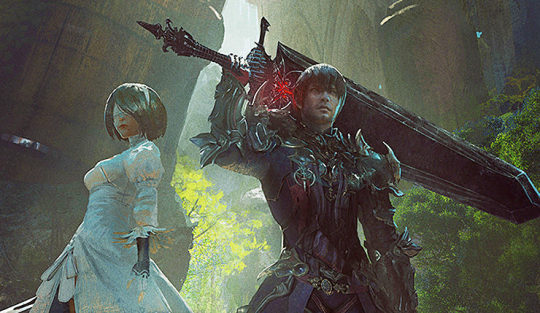
-The game I put maybe the most time into this year was Final Fantasy XIV: A Realm Reborn. I finally made the plunge into neverending FF MMO content, and I’m as happy as I am overwhelmed. This was a big year for the game, between the release of the Shadowbringers expansion and the Nier: Automata raid, and it very well may have made it onto my list if I had managed to actually get to any of it. At the time of this writing, though, I’ve only just finished 2015’s Heavensward, so I’ve got...a long way to go.
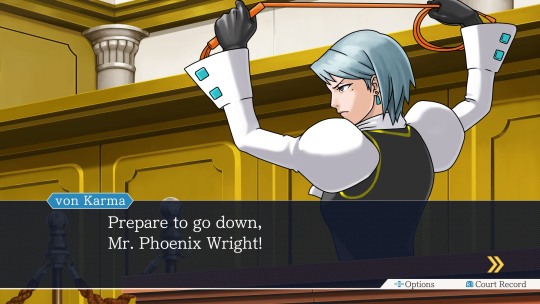
-One quick shoutout to the Phoenix Wright: Ace Attorney Trilogy that came out on Switch this year, a remaster of some DS classics I never played. An absolutely delightful visual novel series that I fell in love with throughout this year.
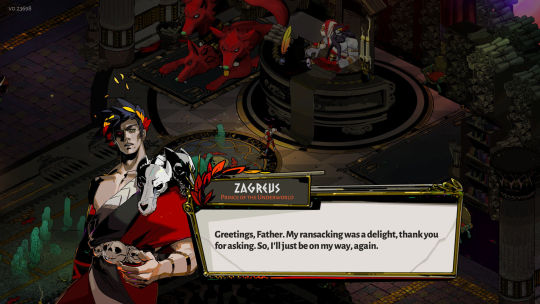

-I originally included a couple games currently in early access that I’ve enjoyed immensely. I removed them not because of arbitrary rules about what technically “came out” this year, but just to make room for some other games I liked, out of the assumption that I’ll still love these games in their 1.0 formats when they’re released next year to include them on my 2020 list. So shoutout to Hades, probably the best rogue-like/lite/whatever I’ve ever played, and Spin Rhythm XD, which reignited my love for rhythm games.
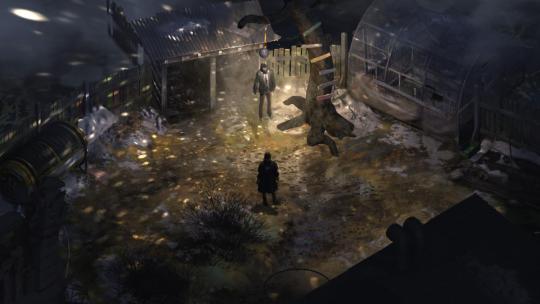
-Disco Elysium isn’t on this list, because I’ve played about an hour of it and haven’t yet been hooked by it. But I’ve heard enough about it to be convinced that it is 1000% a game for me and something I need to get to immediately. They shouted out Marx and Engels at the Game Awards! They look so cool! I want to be their friend! And hopefully, a few weeks from now, I’ll desperately want to redact this list to squeeze this game somewhere in here.
Alright, he’s the actual list:
10. Amid Evil
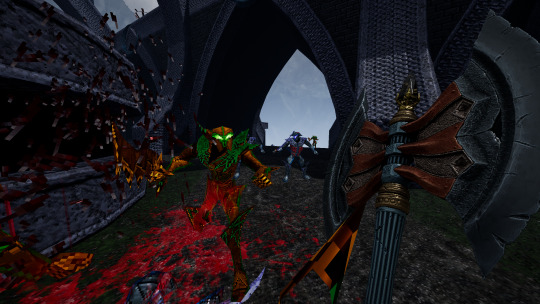
The 90’s FPS renaissance continues! As opposed to last year’s Dusk, a game I adored, this one takes its cues less from Quake and more from Heretic/Hexen, placing a greater emphasis on melee combat and magic-fuelled projectiles than more traditional weapons. Also, rather than that game’s intentionally ugly aesthetic, this one opts for graphics that at times feel lush, detailed, and pretty, while still probably mostly fitting the description of lo-fi. In fact, they just added RTX to the game, something I’m extremely curious to check out. This game continued to fuel my excitement about the possibilities of embracing out-of-style gameplay mechanics to discover new and fresh possibilities from a genre I’ve never been able to stop yearning for more of.
9. Ape Out
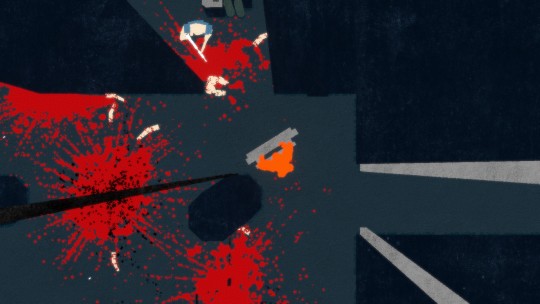
If this were a “coolest games” list, Ape Out would win it, easily. It’s a simple game whose mechanics don’t particularly evolve throughout the course of its handful of hours, but it leaves a hell of an impression with its minimalist cut-out graphics, stylish title cards, and percussive soundtrack. Smashing guards into each other and walls and causing them to shoot each other in a mad-dash for the exit is a fun as hell take on Hotline Miami-esque top down hyper violence, even if it’s a thin enough concept that it starts to feel a bit old before the end of the game.
8. Fire Emblem: Three Houses
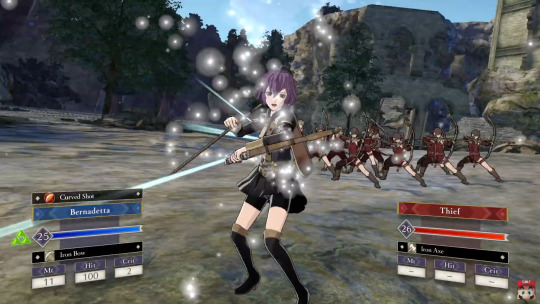
I had a lot of problems with this game, probably most stemming from just how damn long it is - I still haven’t finished my first, and likely only, playthrough. This length seems to have motivated the developers to make battles more simple and easy, and to be fair, I would get frustrated if I were getting stuck on individual battles if I couldn’t stop thinking about how much longer I have to go, but as it is, I’ve just found them to be mostly boring. This is particularly problematic for a game that seems to require you to play through it at least...three times to really get the full picture? I couldn’t help but admire everything this game got right, though, and that mostly comes down to building a massive cast of extremely well realized and likable characters whose complex relationships with each other and with the structures they pledge loyalty to fuels harrowing drama once the plot really sets into motion. There’s a reason no other game inspired such a deluge of memes and fan fiction and art into my Twitter feed this year. It’s an impressive feat to convince every player they’ve unquestionably picked the right house and defend their problem children till the bitter end. After the success of this game, I’d love to see what this team can do next with a narrower focus and a bigger budget.
7. Resident Evil 2
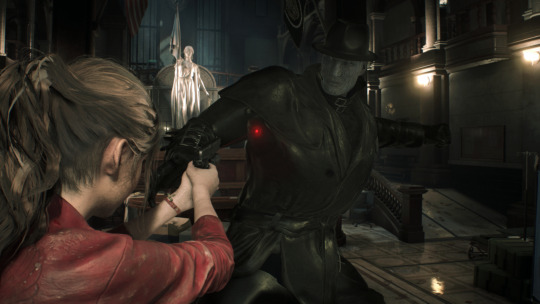
It’s been a long time since I played the original Resident Evil 2, but I still consider it to be one of my favorite games of all time. I was highly skeptical of this remake at first, holding my stubborn ground that changing the fixed camera to a RE4-style behind the back perspective would turn this game more into an action game and less of a survival horror game where feeling a lack of control is part of the experience. I was pleasantly surprised to find how much they were able to modernize this game while maintaining its original feel and atmosphere. The fumbly, drifting aim-down sights effectively sell the feeling of being a rookie scared out of your wits. Being chased by Mr. X is wildly anxiety-inducing. But even more surprisingly, perhaps the greatest upgrade this game received was its map, which does you the generous service of actually marking down automatically where puzzles and items are, which rooms you’ve yet to enter, which ones you’ve searched entirely, and which ones still have more to discover. Arguably, this disrupts the feeling of being lost in a labyrinthine space that the original inspired, but in practice, it’s a remarkably satisfying and addicting video game system to engage with.
6. Judgment
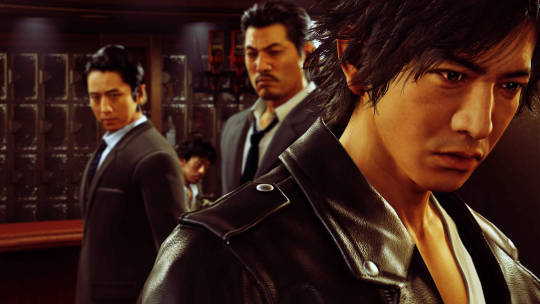
No big surprise here - Ryu ga Gotoku put out another Yakuza-style game set in Kamurocho, and once again, it’s sitting somewhere on my top 10. This time, they finally put Kazuma Kiryu’s story to bed and focused on a new protagonist, down on his luck lawyer-turned-detective Takayuki Yagami. The new direction doesn’t always pay off - the added mechanics of following and chasing suspects gets a bit tedious. The game makes up for it, though, by absolutely nailing a fun, engrossing J-Drama of a plot entirely divorced from the Yakuza lore. The narrative takes several head-spinning turns through its several dozen hours, and they all feel earned, with a fresh sense of focus. The side stories in this one do even more to make you feel connected to the community of Kamurocho by befriending people from across the neighborhood. I’d love to see this team take even bigger swings in the future - and from what I’ve seen from Yakuza 7, that seems exactly like what they’re doing - but even if this game shares maybe a bit too much DNA with its predecessors, it’s hard to complain when the writing and acting are this enjoyable.
5. Control
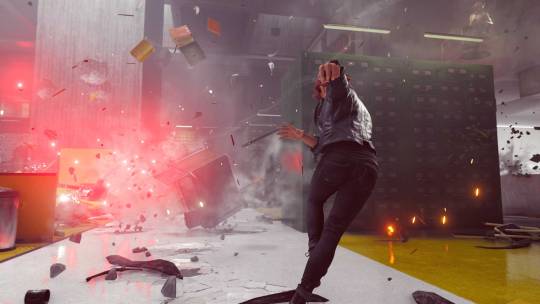
Control feels like the kind of game that almost never gets made anymore. It’s a AAA game that isn’t connected to any larger franchises and doesn’t demand your attention for longer than a dozen hours. It doesn’t shoehorn needless RPG or MMO mechanics into its third-person action game formula to hold your attention. It introduces a wildly clever idea, tells a concise story with it, and then its over. And there’s something so refreshing about all of that. The setting of The Oldest House has a lot to do with it. I think it stands toe-to-toe with Rapture or Black Mesa as an instantly iconic game world. Its aesthetic blend of paranormal horror and banal government bureaucracy gripped my inner X-Files fan instantly, and kept him satisfied not only with its central characters and mystery but with a generous bounty of redacted documents full of worldbuilding both spine-tingling and hilarious. More will undoubtedly come from this game, in the form of DLC and possibly even more, with the way it ties itself into other Remedy universes, and as much as I expect I will love it, the refreshing experience this base game offered me likely can’t be beat.
4. Anodyne 2
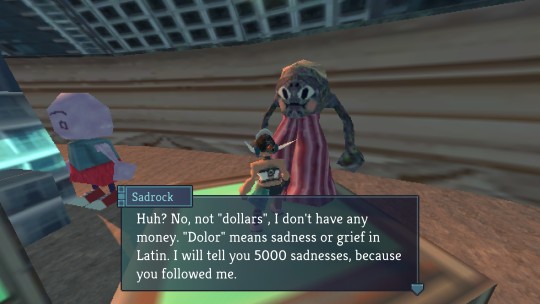
I awaited Sean Han Tani and Marina Kittaka’s new game more anxiously than almost any game that came out this year, despite never having played the first one, exclusively on my love for last year’s singular All Our Asias and the promise that this game would greatly expand on that one’s Saturn/PS1-esque early 3D graphics and personal, heartfelt storytelling. Not only was I not disappointed, I was regularly pleasantly surprised by the depth of narrative and themes the game navigates. This game takes the ‘legendary hero’ tropes of a Zelda game and flips them to tell a story about the importance of community and taking care of loved ones over duty to governments or organizations. The dungeons that similarly reflect a Link to the Past-era Zelda game reduce the maps to bite-sized, funny, clever designs that ask you to internalize unique mechanics that result in affecting conclusions. Plus, it’s gorgeously idiosyncratic in its blend of 3D and 2D environments and its pretty but off-kilter score. It’s hard to believe something this full and well realized came from two people.
3. Eliza
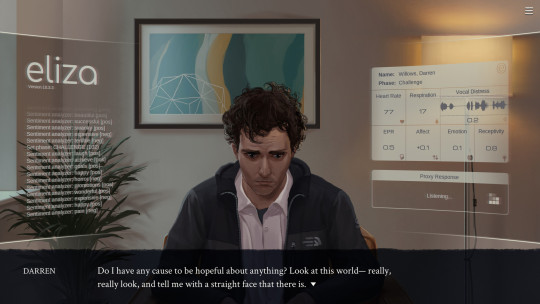
Eliza is a work of dystopian fiction so closely resembling the state of the world in 2019 it’s hard to even want to call it sci-fi. As a proxy for the Eliza app, you speak the words of an AI therapist that offers meager, generic suggestions as a catch-all for desperate people facing any number of the nightmares of our time. The first session you get is a man reckoning with the state the world is in - we’ve only got a few more years left to save ourselves from impending climate crisis, destructive development is rendering cities unlivable for anyone but the super-rich, and the people who hold all the power are just making it all worse. The only thing you offer to him is to use a meditation app and take some medication. It doesn’t take long for you to realize that this whole structure is much less about helping struggling people and more about mining personal data.
There’s much more to this story than the grim state of mental health under late capitalism, though. It’s revealed that Evelyn, the character you play as, has a much closer history with Eliza than initially evident. Throughout the game, she’ll reacquaint herself with old coworkers, including her two former bosses who have recently split and run different companies over their differing frightening visions for the future. The game offers a biting critique of the kind of tech company optimism that brings rich, eccentric men to believe they can solve the world’s problems within the hyper-capitalist structure they’ve thrived under, and how quickly this mindset gives way to techno-fascism. There’s also Evelyn’s former team member, Nora, who has quit the tech world in favor of being a DJ “activist,” and her current lead Rae, a compassionate person who genuinely believes in the power of Eliza to better people’s lives. The writing does an excellent job of justifying everyone’s points of view and highlighting the limits of their ideology without simplifying their sense of morality.
Why this game works so well isn’t just its willingness to stare in the face of uncomfortably relevant subject matter, but its ultimately empathetic message. It offers no simple solutions to the world’s problems, but also avoids falling into utter despair. Instead, it places measured but inspiring faith in the power of making small, meaningful impacts on the people around you, and simply trying to put some good into your world. It’s a game both terrifying and comforting in its frank conclusions.
2. Death Stranding
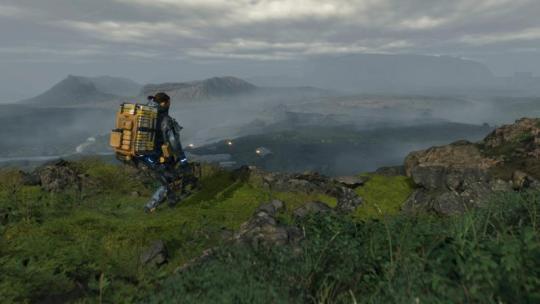
For a game as willfully dumb as this one often is - that, for example, insists on giving all of its characters with self-explanatory names long monologues about how they got that name - Death Stranding was one of the most thought provoking games I’ve played in a while. Outside of its indulgent, awkwardly paced narrative, the game offers plenty of reflection on the impact the internet has had on our lives. As Sam Porter Bridges, you’re hiking across a post-apocalyptic America, reconnecting isolated cities by delivering supplies, building infrastructure, and, probably most importantly, connecting them to the Chiral Network, an internet of sorts constructed of supernatural material of nebulous origin. Through this structure, the game offers surprisingly insightful commentary about the necessity for communication, cooperation, and genuine love and care within a community.
The lonely world you’re tasked to explore, and the way you’re given blips of encouragement within the solitude through the structures and “likes” you give and receive through the game’s asynchronous multiplayer system, offers some striking parallels for those of us particularly “online” people who feel simultaneous desperation for human contact and aversion to social pressures. I’ve heard the themes of this game described as “incoherent” due to the way it seems to view the internet both as a powerful tool to connect people and a means by which people become isolated and alienated, but are both of these statements not completely true to reality? The game simplifies some of its conclusions - Kojima seems particularly ignorant of America’s deep structural inequities and abuses that lead to a culture of isolation and alienation. And yet, the questions it asks are provocative enough that they compelled me to keep thinking about them far longer than the answers it offers.
Beyond the surprisingly rich thematic content, this game is mostly just a joy to play. Death Stranding builds kinetic drama out of the typically rote parts of games. Moving from point A to point B has become an increasingly tedious chore in the majority of AAA open world games, but this is a game built almost entirely out of moving from point A to point B, and it makes it thrilling. The simple act of walking down a hill while trying to balance a heavy load on your back and avoiding rocks and other obstacles fulfills the promise of the term ‘walking simulator’ in a far more interesting way than most games given that descriptor. The game consistently doles out new ways to navigate terrain, which peaked for me about two thirds of the way through the game when, after spending hours setting up a network of zip lines, a delivery offered me the opportunity to utilize the entire thing in a wildly satisfying journey from one end of the map to another. It was the gaming moment of the year.
1. Outer Wilds
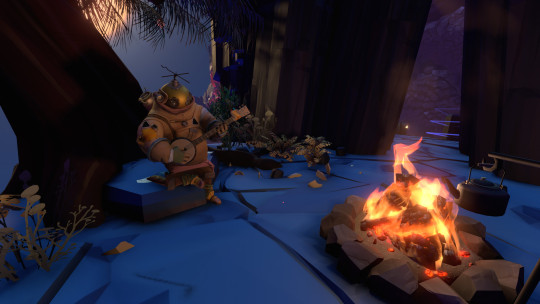
The first time the sun exploded in my Outer Wilds playthrough, I was probably about to die anyway. I had fallen through a black hole, and had yet to figure out how to recover from that, so I was drifting listlessly through space with diminishing oxygen as the synths started to pick up and I watched the sun fall in on itself and then expand throughout the solar system as my vision went went. The moment gave me chills, not because I wasn’t already doomed anyway, but because I couldn’t help but think about my neighbors that I had left behind to explore space. I hadn’t known that mere minutes after I left the atmosphere the solar system would be obliterated, but I was at least able to watch as it happened. They probably had no idea what happened. Suddenly their lives and their planet and everything they had known were just...gone. And then I woke up, with the campfire burning in front of me, and everyone looking just as I had left it. And I became obsessed with figuring out how to stop that from happening again.
What surprised me is that every time the sun exploded, it never failed to produce those chills I felt the first time. This game is masterful in its art, sound, and music design that manages to produce feelings so intense from an aesthetic so quaint. Tracking down fellow explorers by following the sound of their harmonica or acoustic guitar. Exploring space in a rickety vessel held together by wood and tape. Translating logs of conversations of an ancient alien race and finding the subject matter of discussion to be about small interpersonal drama as often as it is revelatory secrets of the universe. All of the potentially twee aspects of the game are balanced out by an innate sense of danger and terror that comes from exploring space and strange worlds alone. At times, the game dips into pure horror, making other aspects of the presentation all the more charming by comparison. And then there’s the clockwork machinations of the 22-minute loop you explore within, rewarding exploration and experimentation with reveals that make you feel like a genius for figuring out the puzzle at the same time that you’re stunned by the divulgence of a new piece of information.
The last few hours of the game contained a couple puzzles so obfuscated that I had to consult a guide, which admittedly lessened the impact of those reveals, but it all led to one of the most equally devastating and satisfying endings I’ve experienced in a video game recently. I really can’t say enough good things about this game. It’s not only my favorite game this year, but easily one of my favorite games of the decade, and really, of all-time, when it comes down to it.
#outer wilds#death stranding#eliza#anodyne 2#control#judgment#resident evil 2#fire emblem: three houses#Ape Out#Amid Evil#games#video games#GOTY
87 notes
·
View notes
Text
I finally finished Strikers and I just have so many thoughts about the game itself. (This post is just gonna be me rambling my opinions and such about my experience.) So naturally this will spoil the entire game! Read at your discretion.
It was a really enjoyable game. I liked the style of combat because it reminded me of some of the Warriors games (like Zel/da and Fire Em/blem). I’ve put in far too many hours for those games (the FE one is probably like my second most played Switch game), so naturally I was very excited when learning that Strikers would have a similar system. I played on normal difficulty from start to finish, and it was a pretty nice challenge. The only thing I didn’t really like was how easy and quickly it was to consume SP. It wasn’t terrible, it was manageable, but it was still irritating at times having to stay on top of how stocked I was on those items. Then also jumping in and out of the jail. While I like that it didn’t hold the same repercussions as in the main game it would just have to happen way too often to keep your team in top form.
Mechanics aside, I really liked some of the new characters. I loved Zenkichi and Akane (though I wish we could’ve gone back to see her). I wish Akane was just more than a plot device and could be an honorary fan like Mishima. Sophia was just a darling I love her so much. She must be protected at all costs. Ichinose was alright. I kinda figured she had an ulterior motive from her first meeting, and a lot of the story was just very predictable? Which isn’t necessarily a bad thing! Good stories allude to future events, after all. But a lot of stuff was just very obvious. That could just be me, but still. And I think what didn’t really help the case was that it was a lot crammed into a span of a month for all of the events to take place.
I would’ve loved to see more interactions with the antagonists of the story, because some of them had so much potential. So the story in itself to me felt a bit lacking. It so closely mirrored the main game’s events, so I guess I just wish we got to see more. And characters talking during battles, it was like that in the other Warriors games I played, and it’s still not something that I’m personally a fan of. Because trying to concentrate on battle and straining to hear the dialogue was a bit of a pain (especially with how quiet the English voices could be at times).
But speaking of dialogue, I really loved the banter back and forth between the Thieves. There were just some really good moments from Ryuji ordering that gold bar to Ryuji and Yusuke having a soda drinking contest. That and the relationships made the game for me more than the actual story arc to be honest. Though I’m also feeling very conflicted on how I feel about Sophia joining Ichinose instead of staying with the Thieves at the end. I’m kinda going back and forth on that one.
Either way I hope this all makes sense since it’s just a bunch of random thoughts thrown together.
Overall though, I really did enjoy the game! Would I play it again? Hmmmm, I’m not entirely sure. Maybe to try to get the rest of the trophies cause I love collecting and completing things I love in that way. But I probably won’t be replaying it any time soon.
#; OOC || Bri ♟️#//Ryuji getting to say fuck and him calling the Ark a 'box o' bullshit' was just peak content.#//Oh that and Yusuke being so salty about Jails ruining his trip to Kyoto.#//I love them they're such idiots but they're our idiots and I love that for them.
1 note
·
View note
Text
First Impressions / Review - Cyberpunk 2077
I have some screenshots but they’re mostly photo mode and the occasional interface showing off my gear. So this review will be pic-less for now. I got Cyberpunk off of Stimulus money so as far as I’m concerned, the government paid for this game which does negate some of the problems I’d normally have for dropping 80$ or so on a preorder. Use that information how you will. First, I want to address some technical issues. In the sense that I don’t have very many. I have a 1050 GTX, an i5 processor, and 16GB of Ram. That’s about as complex as my knowledge goes on that. I’ve had a few glitches like Jackie ghosting through a closed door, some vans were clipped into the parking lot, and some NPC’s being stuck in furniture. A lot of ghosting around, really. The odd frame drop but nothing game breaking, and I haven’t had any crashes except one on startup, right after updating my drivers. Just the one in ~21 hours of gameplay. I play on High (but not ultra) settings. So all in all, not a bad experience. Everyone’s computer is a unique butterfly so while you will see a lot of yelling on various communities, some of us are trucking along several hour sessions at a time and not having a problem. Let’s do a quick dive into the story, and there may be some spoilers here but it’s mostly for Act 1, which is reachable just a couple hours depending on how quickly you want to unlock the whole city (as you’re locked to one region until you complete a major heist).
You play as V, of any variety of gender identity you wish (though you are stuck with he or she pronouns). Basically a futuristic mercenary that does any kind of work available, kind of giving me some vibes from Burn Notice. Arms deals, stealing fans, VIP extraction, and so on. Of course, nothing goes as plan and you more or less lose your entire initial team after a heist goes wrong in every way possible. You’re witness to a world changing shift in a power structure and are forced to insert a chip with the ‘soul’ of Johnny Silverhand, an angry and incredibly bitter man who staged a bombing decades before V enters the game. This becomes the driving force of the game as you work to remove him safely from your body before he replaces you entirely - Something that not even he can stop, really. I’ve only had my toes dipped in Cyberpunk as a genre but it seems pretty standard fare. The concepts of “do cybernetics eat your soul’ and the various debate of how much human makes a human, all that. You’re put right there in center force as you grapple with these questions, even though our avatar as V is more concerned with just curing themselves like it was any other terminal disease. Even in-universe, the idea of a soul-preserving microchip is still a relatively new invention, though still in development enough to be advertised and talked about in news circuits. So let’s approach my first problem. It takes several hours for the game to essentially ‘wake up’. For a long time, you’re stuck in several conversations and interactable cutscenes with very little gameplay except taking advantage of V’s chosen origin in dialog. A couple of firefights here and there but the initial region locks you in and there’s only so many world encounters to just run into. The game more or less railroads you into completing Act 1 with some haste, because it also unlocks the ability to get more cybernetics and even some actual, full on mechanics. Within that railroading, you’re witness to so. Much. God. Damn. Talking. Mercifully you can press or hold “c” to skip through some things if you already understand the gist, but the first several hours of the game can very much feel like a very pretty walking simulator. Thankfully this kind of goes away after Act 1. You suddenly get called by a variety of Fixers that preside over various regions and they toss you dozens of side-jobs to do and so far, I find them to be delightfully varied. As a stealther, I found great joy in having a VIP escort quest with the optional objective of not sounding any alarms. So I went and bought myself a silencer and happily snuck around some gang mates boxing in the middle of a building, retrieved my guy, and escorted him outside while leaving several enemies alive. It was a great achievement. These side-gigs can be as complicated or straightforward as you please, giving me some Dues Ex vibes. The tutorial introduces you to hacking so you can distract and destroy your enemies how you see fit, and I have found that most encounters are designed with alternate routes to deal with enemies. Others are less clear. During one gig, I opened a door and the entire bar went ape on me, so I shot my way through and earned two stars from the police. Turned into a massive shootout that led to a dropbox that had gang members in it that also shot at me. Playing on Easy is a saving grace, but as someone who typically likes sneaking around games when the option is available, I wish the game made it more clear if I'm in a "suspicious" type zone. I also have no idea which NPC's are counted as potential enemies (the scan early in the story tells you if they're in a gang or not), as perfectly normal NPC's in the aforementioned bar just began unloading on me. It was wild, and I survived and got paid but the mission giver telling me it was sloppy work. Thanks, lady. Another time I opened a gate and trained my silenced pistol on the guard only for her to slightly sidestep as the gate opening “alerted” her. So I missed the shot, she opened fire, and the entire structure came out to play. It was an intense gunfight in which I was victorious, but it felt hollow as my silenced approach just botched the entire encounter. It was difficult for me to figure out what the game’s general “loop” is. So far it gives me the Ubisoft vibe of “hit everything you run into”. I do like the idea of V being something of a vigilante, as random police encounters pretty much allow you to intervene and gun down gang members without them bothering you about it. I must admit, however, I wish there was more to actually DO in the game. So far it’s mostly just side-gig after side-gig. Escort guy here, steal a van there, eliminate all enemies here. Though again, I said before that some of this can be quite enjoyable under the right circumstances. Maddening in others. In a way, this is kind of the Rage 2 problem all over again, in the sense that people loved the general gunplay but there wasn’t actually a lot of gameplay beyond the decent combat mechanics. Cyberpunk 2077 is certainly no GTA5, but I hope some day it can become that with DLC’s that add actual activities.
A couple of quick asides. I despise the driving, as most vehicles seem to want to spin out very easily if you hold the turning key for a second too long. In some fashion, it forces you to drive like an actual sane person and mowing down civilians (even accidentally) adds a GTA-esque wanted level though it seems stupidly easy to avoid. Narratively, it makes sense as the authorities in this universe are incredibly corrupt and it basically amounts to “eh, they’re too far now, let’s not waste resources”. So, fair enough. Still, I hope to GOD there’s no mandatory story-based racing. Games have screwed me on that before, and I have not beaten most GTA games because of that. Secondly, I don’t think the origin choice does a lot. You get different dialog choices and being a Corpo did lead to one interesting turn when you just ‘knew’ a credit chip had a virus on it. So there is that, but ultimately the rest of the dialog is identical. You could chalk this up to V spending six months with Jackie and he, more or less, lets your V really swim in Night City culture but honestly ALL V choices feel like they’ve become the same person. I was originally a Corpo but it just feels like her past and culture didn’t seep in through most of the dialog. At the end of the day, V is always just some mercenary punk. The world is gorgeous, albeit not as alive as it may have been advertised in promotions. Random civilians just have canned dialog, a lot of it rude. However I’ve been hard pressed to find doubles or clones of anyone just walking around, but that may change once I get into the hundreds of hour counts. It’s a very pretty game and despite some of my qualms, I am enjoying the experience. There’s a photo mode which is wonderful to utilize when you run into an environment that just captures the imagination. I took a screenshot of Jackie’s wall of pinups, including a typical slutty nun but as per the universe, her chest filled with beautifully placed cybernetics. It was just fun to see, and there’s a lot of semi-subtle world building like that that I just adore.
The game has issues. However, if you wanted a slightly scaled back idea of GTA5 with a different aesthetic, this is not at all a bad choice. However I will not blame anyone if they wait for the “GOTY” editions to come out. And on sale.
2 notes
·
View notes